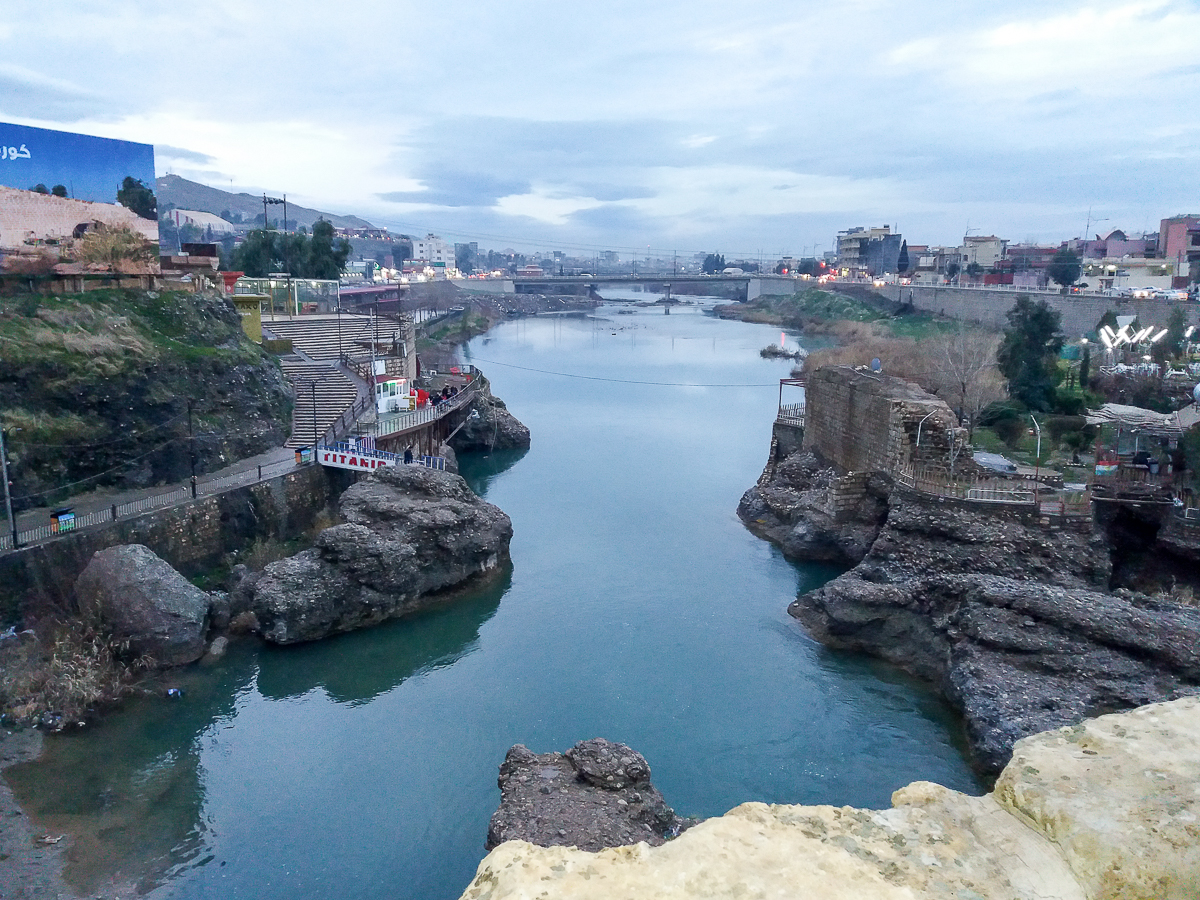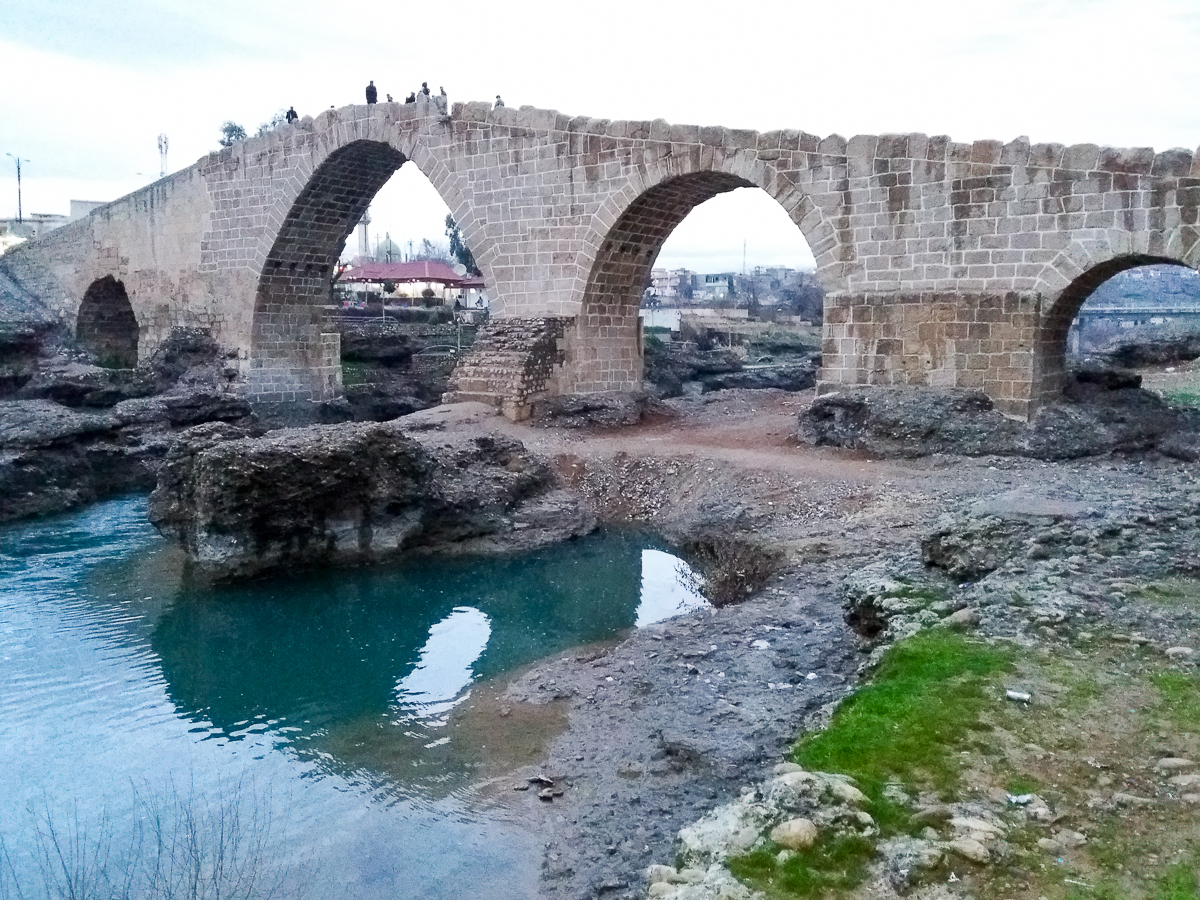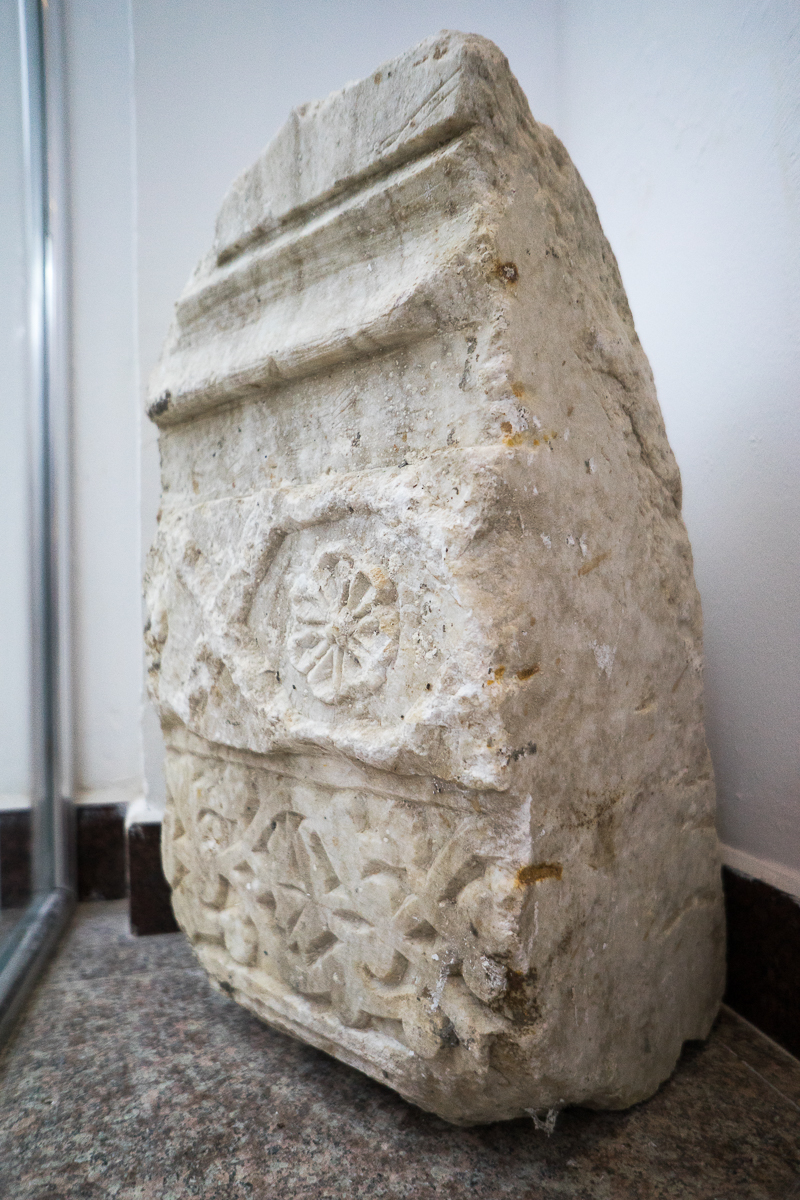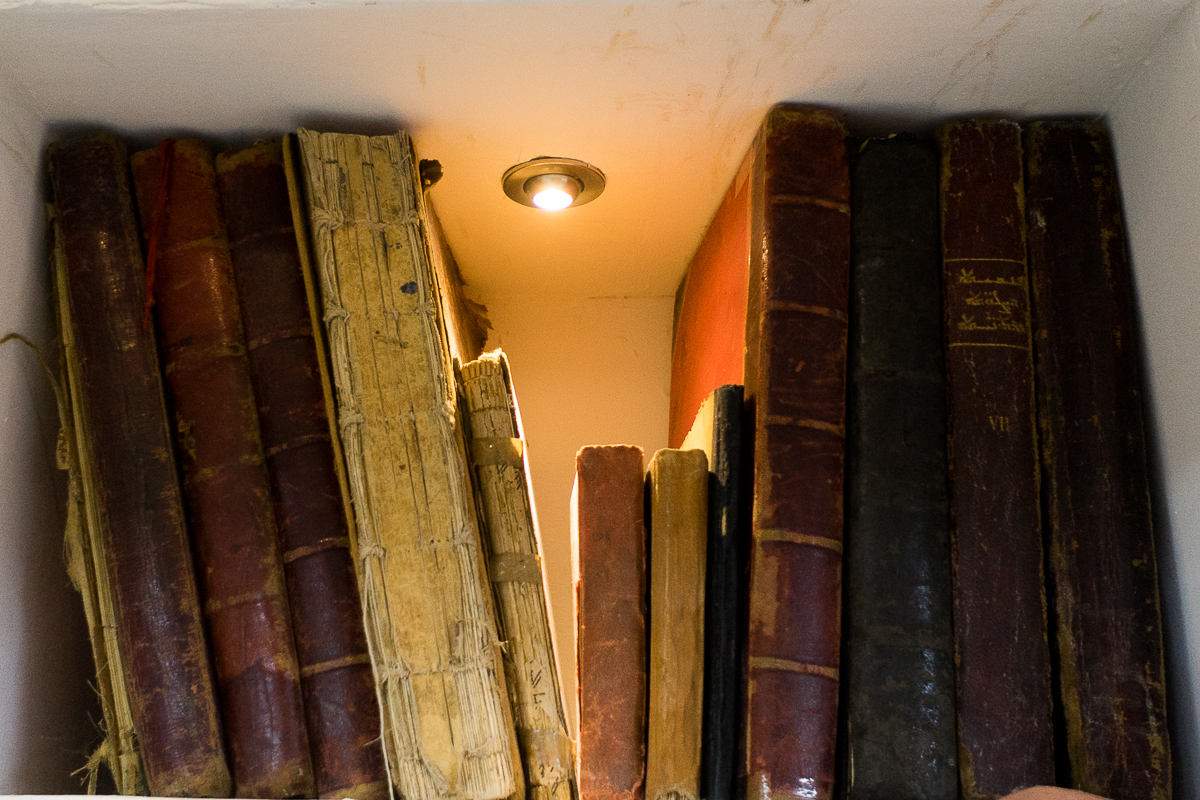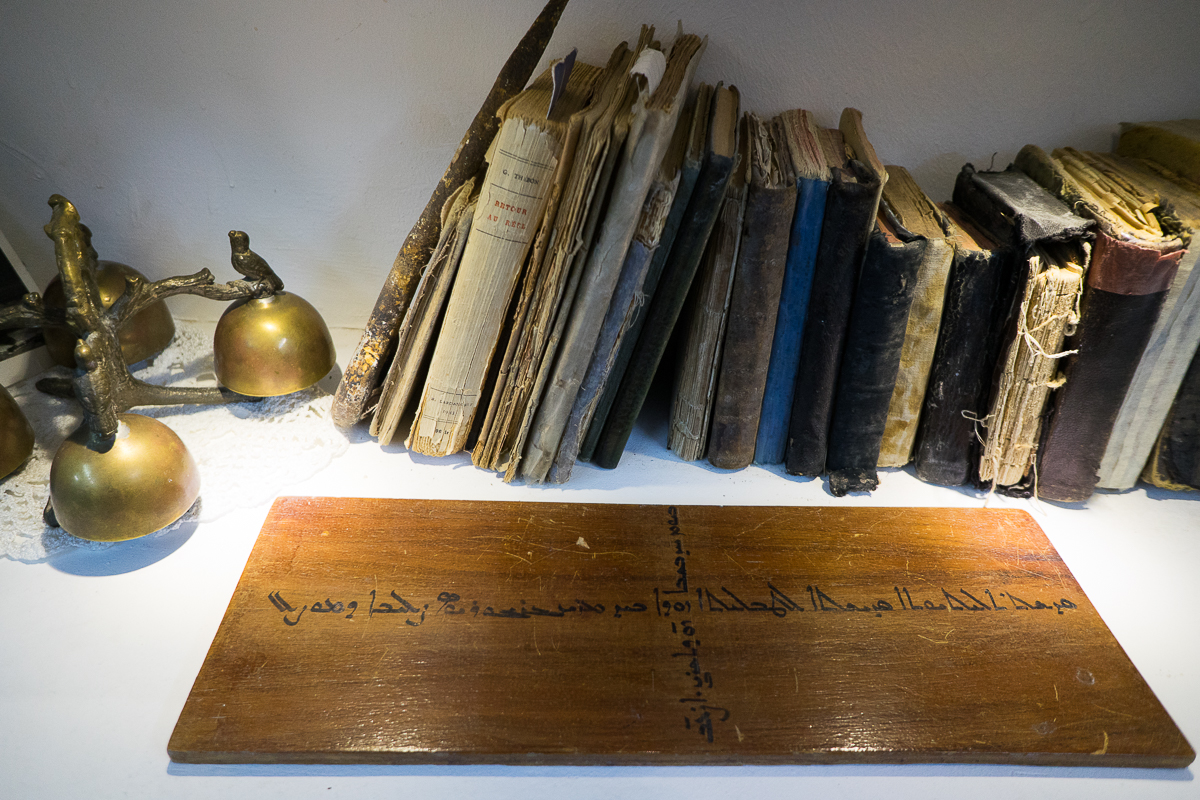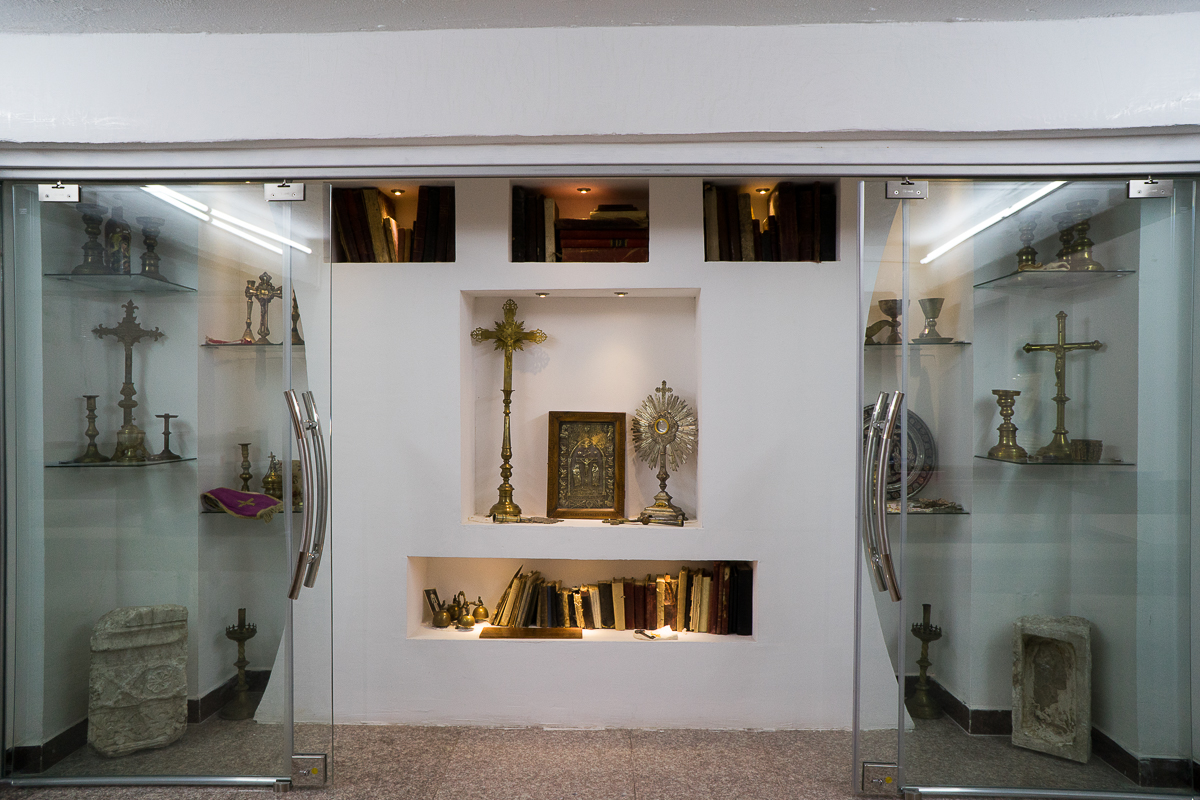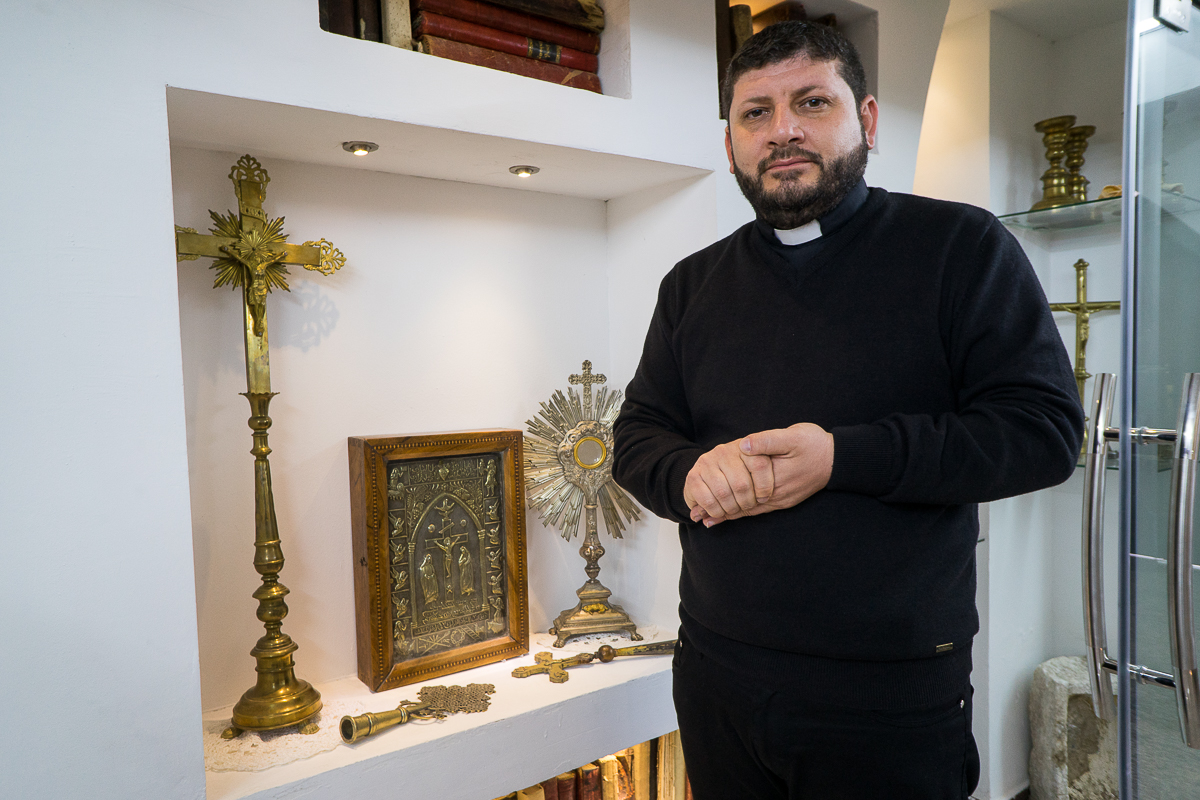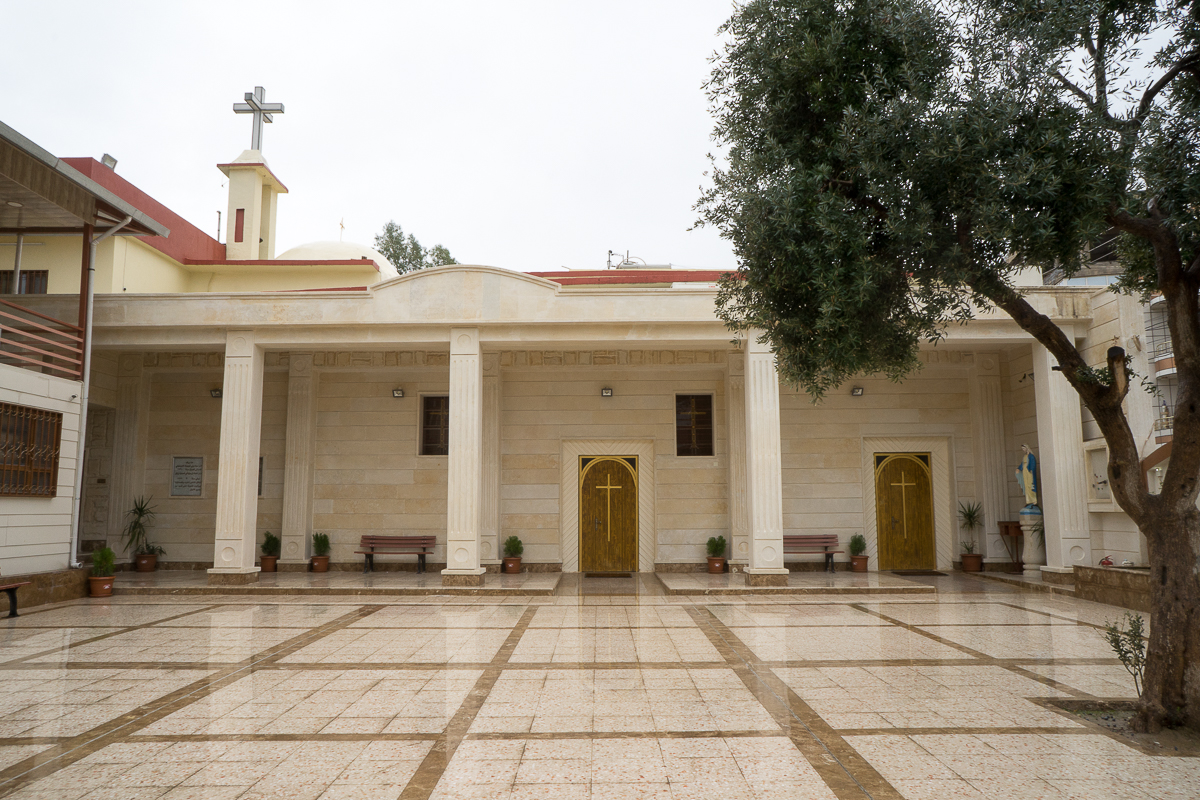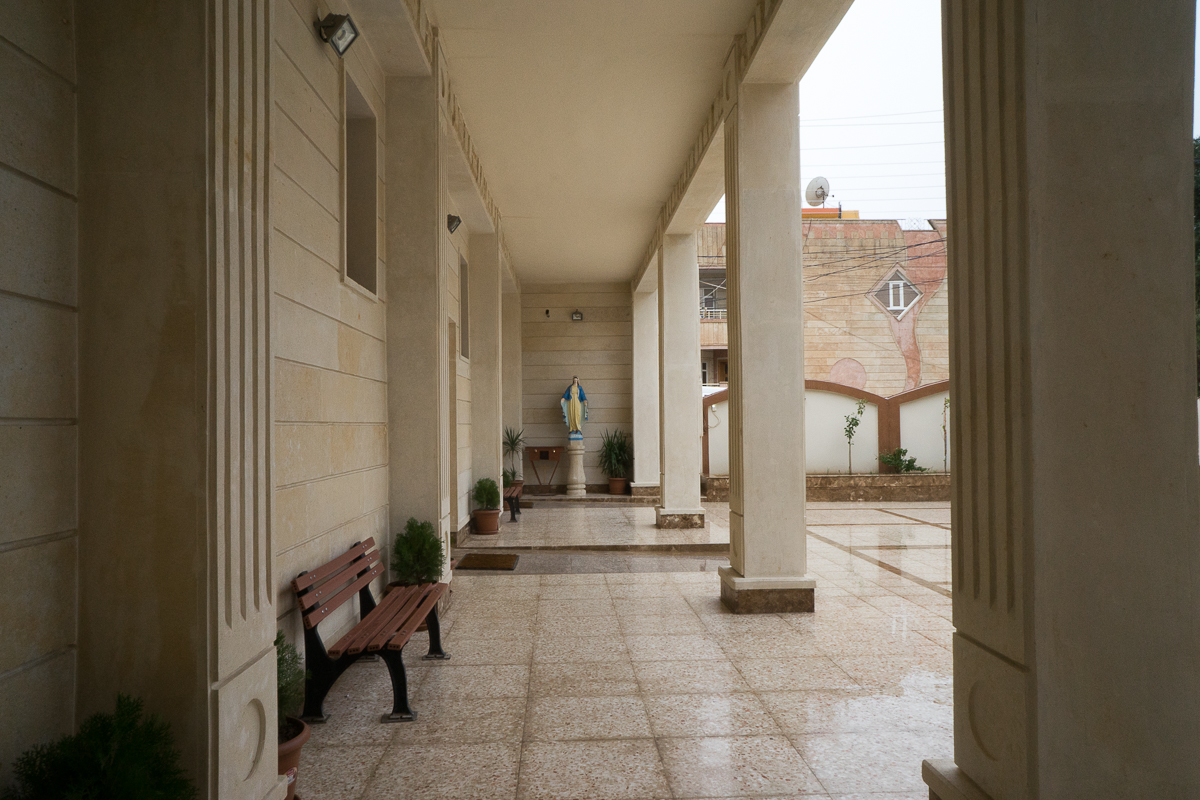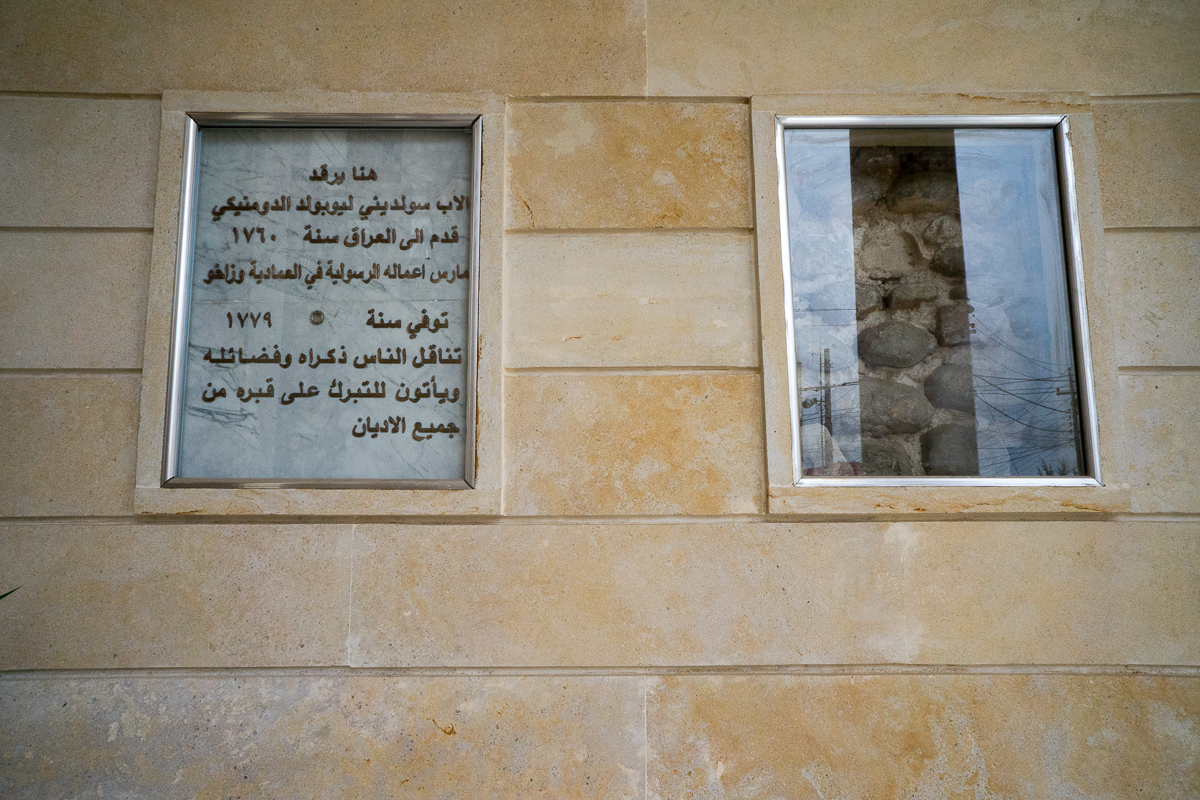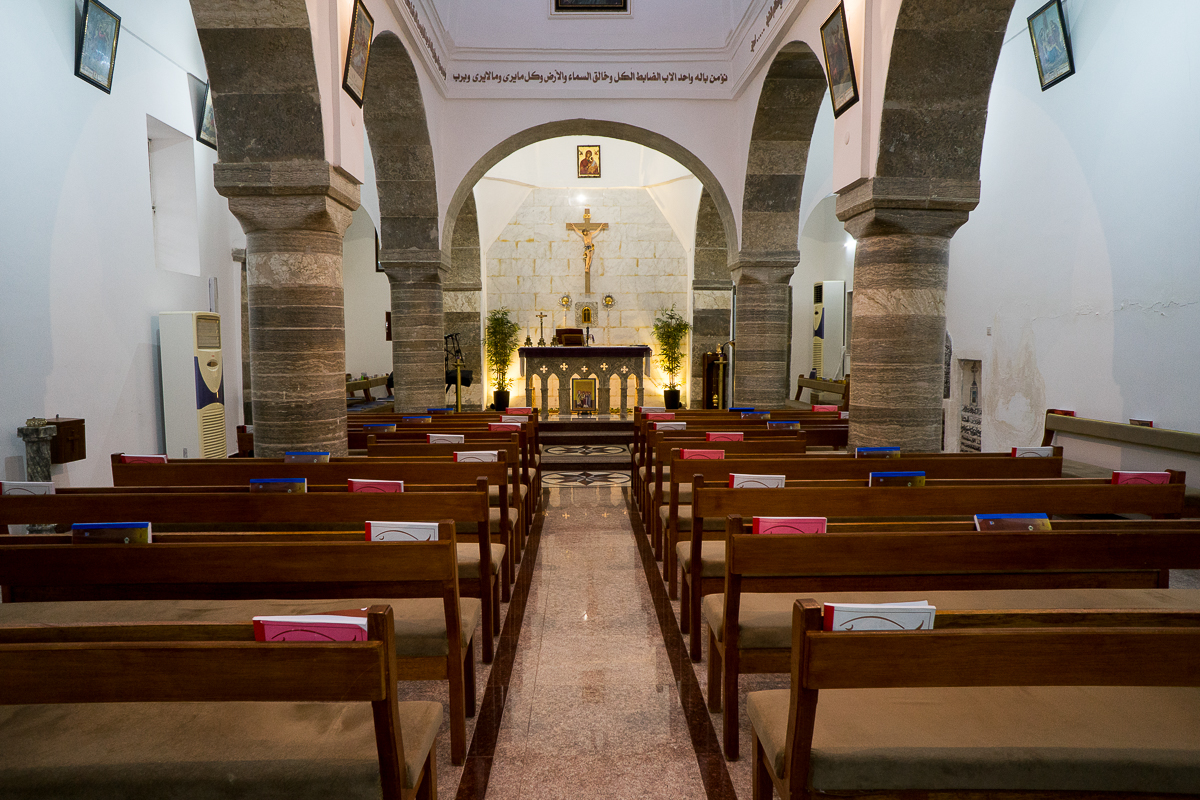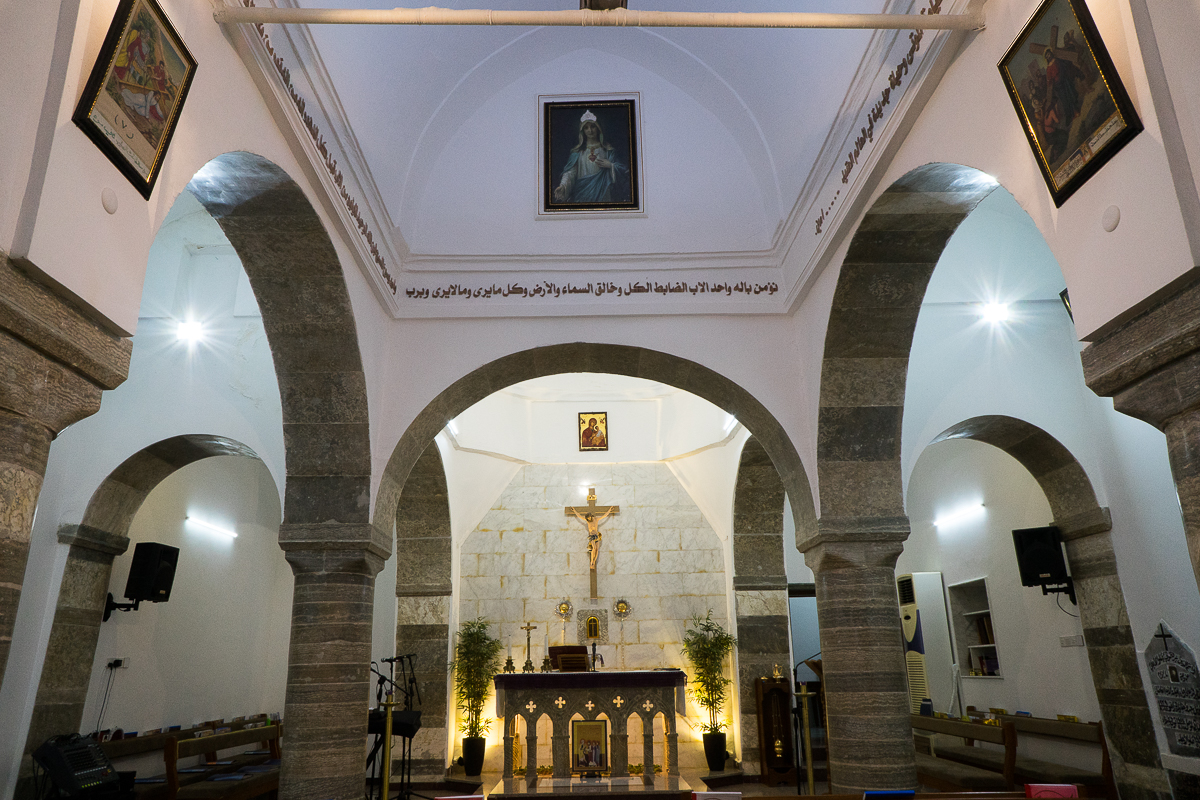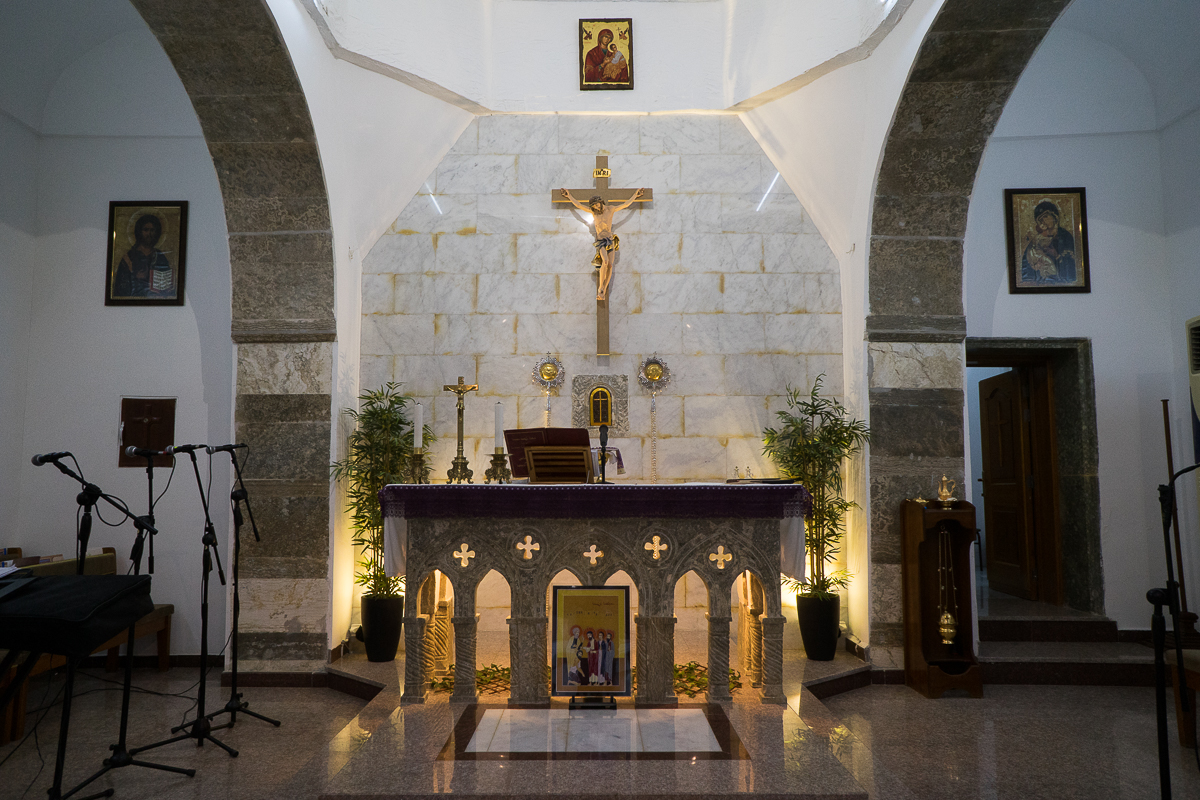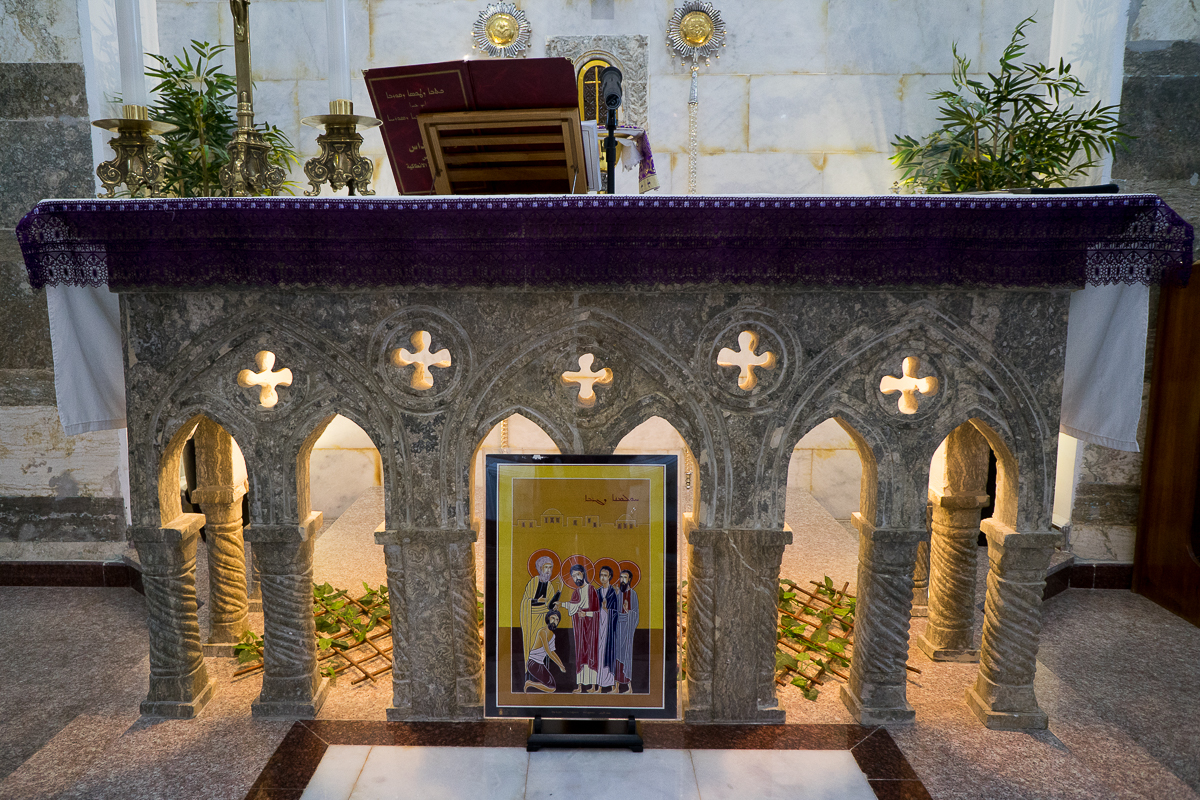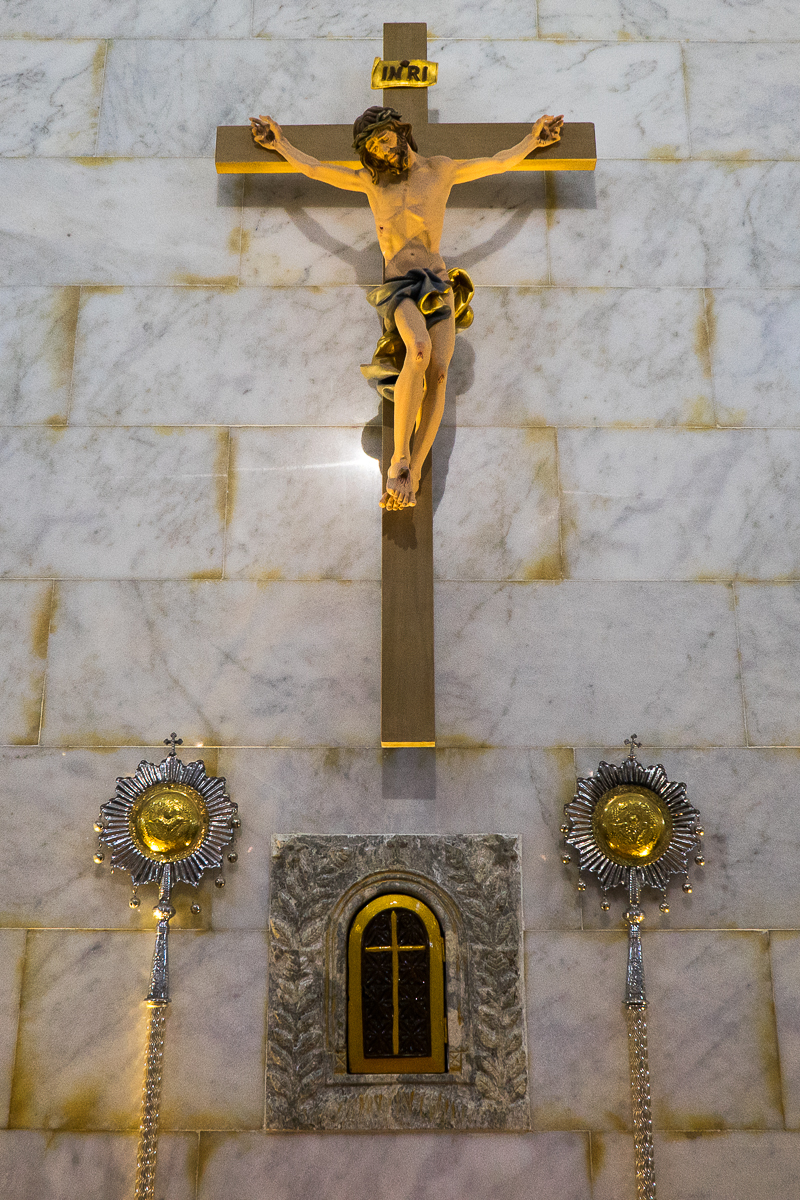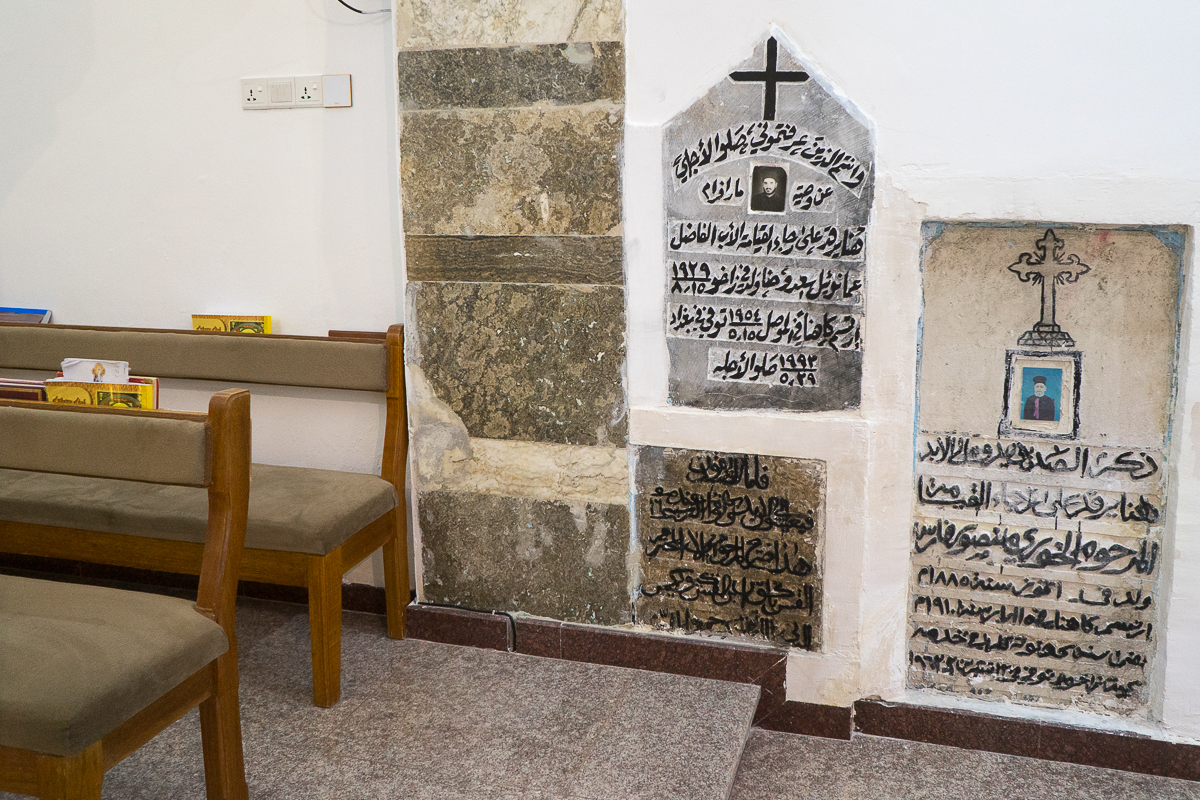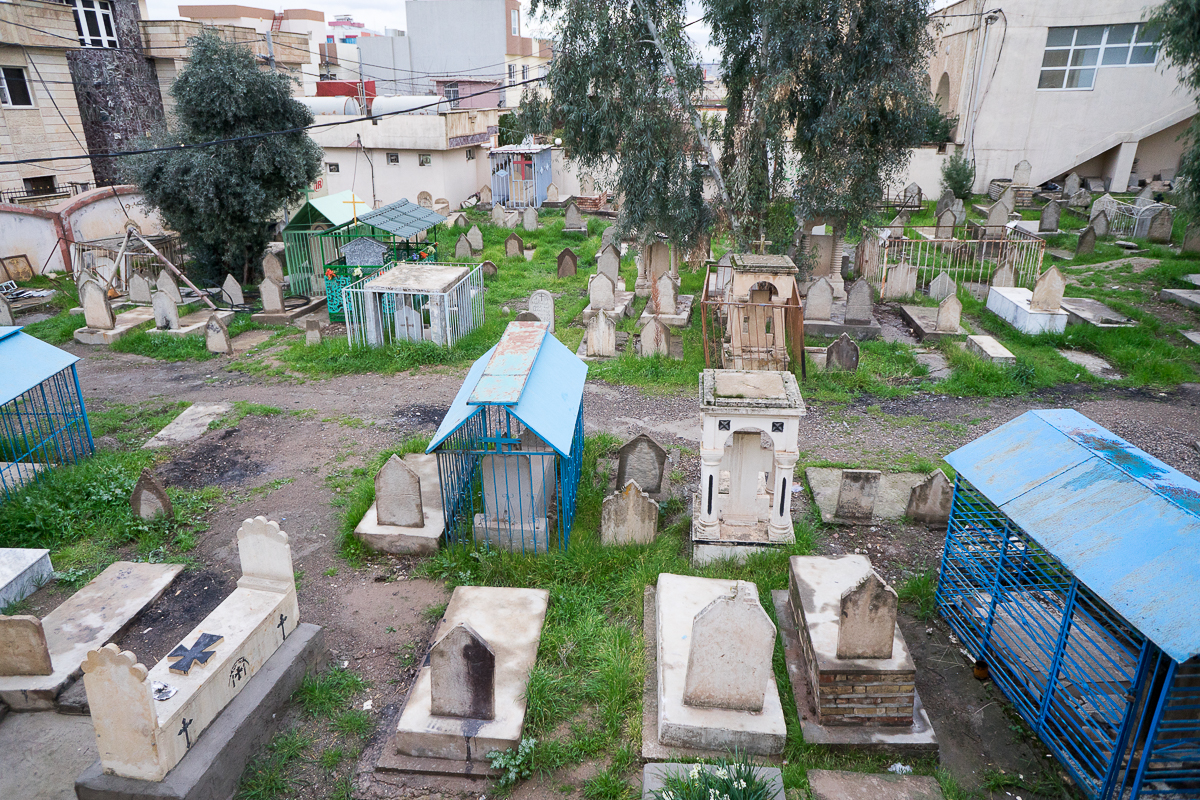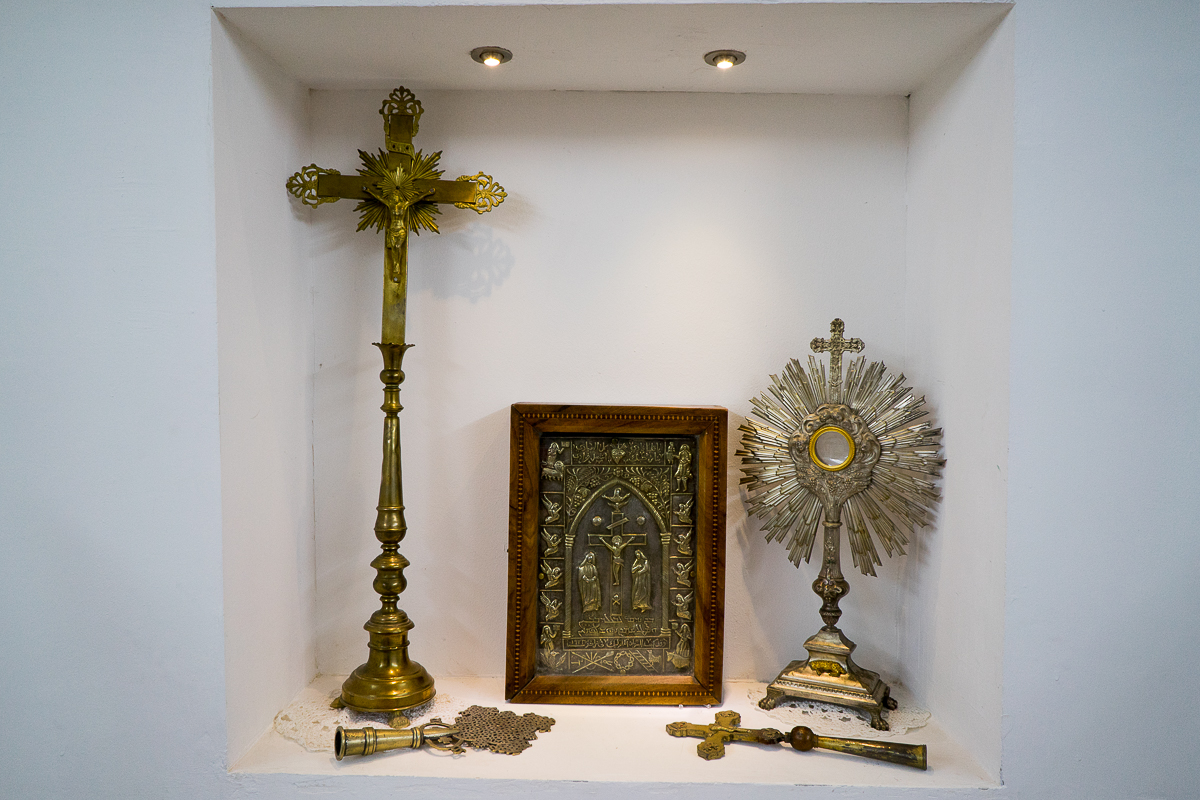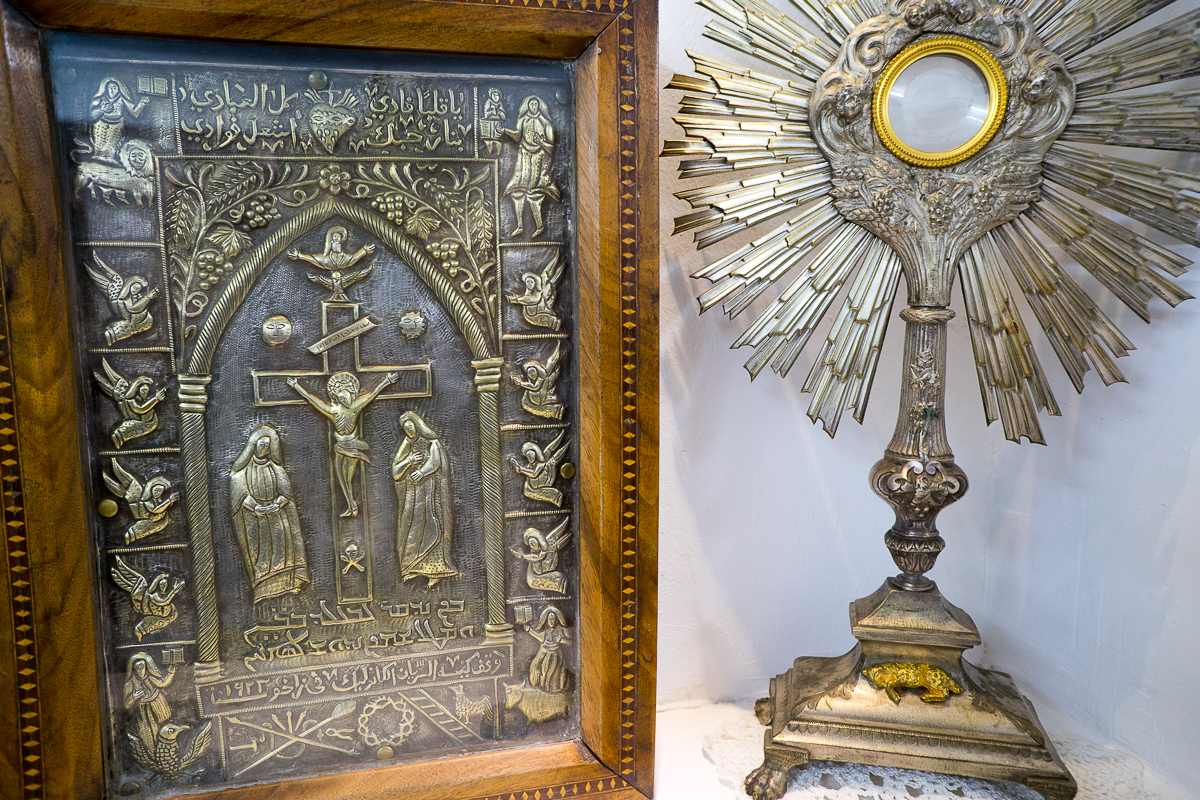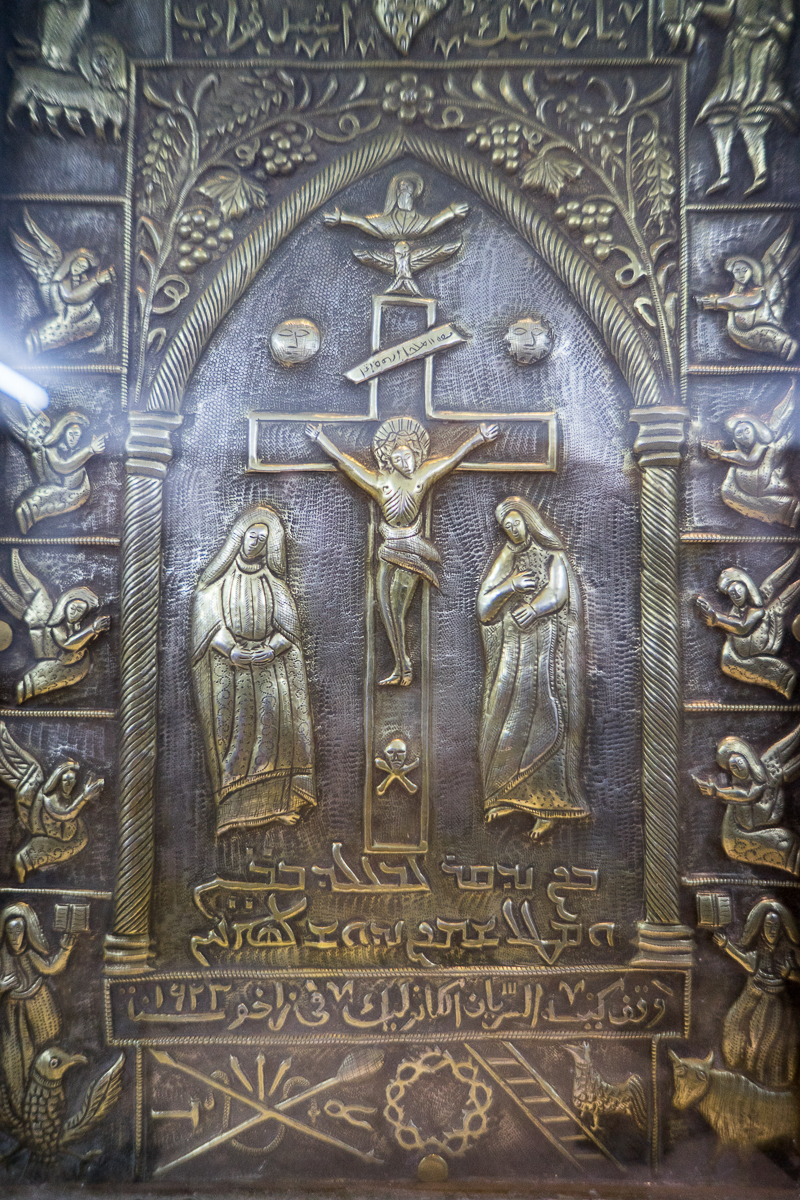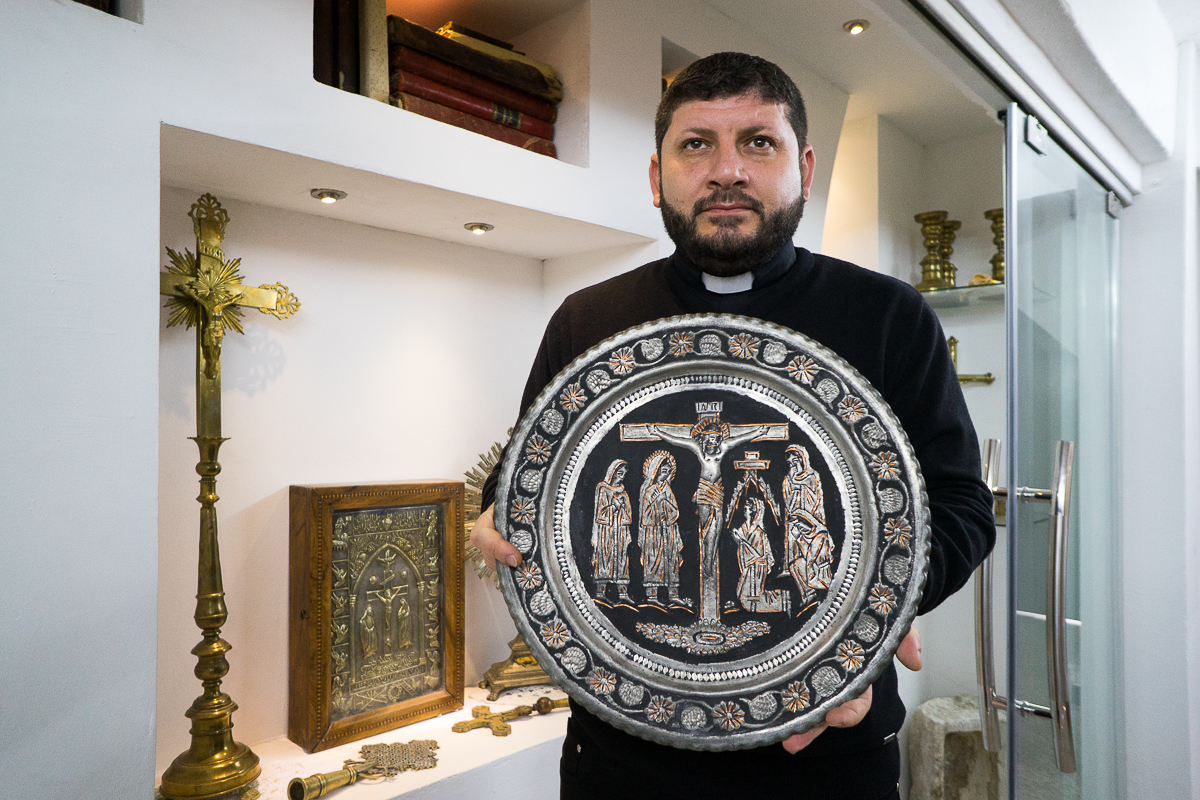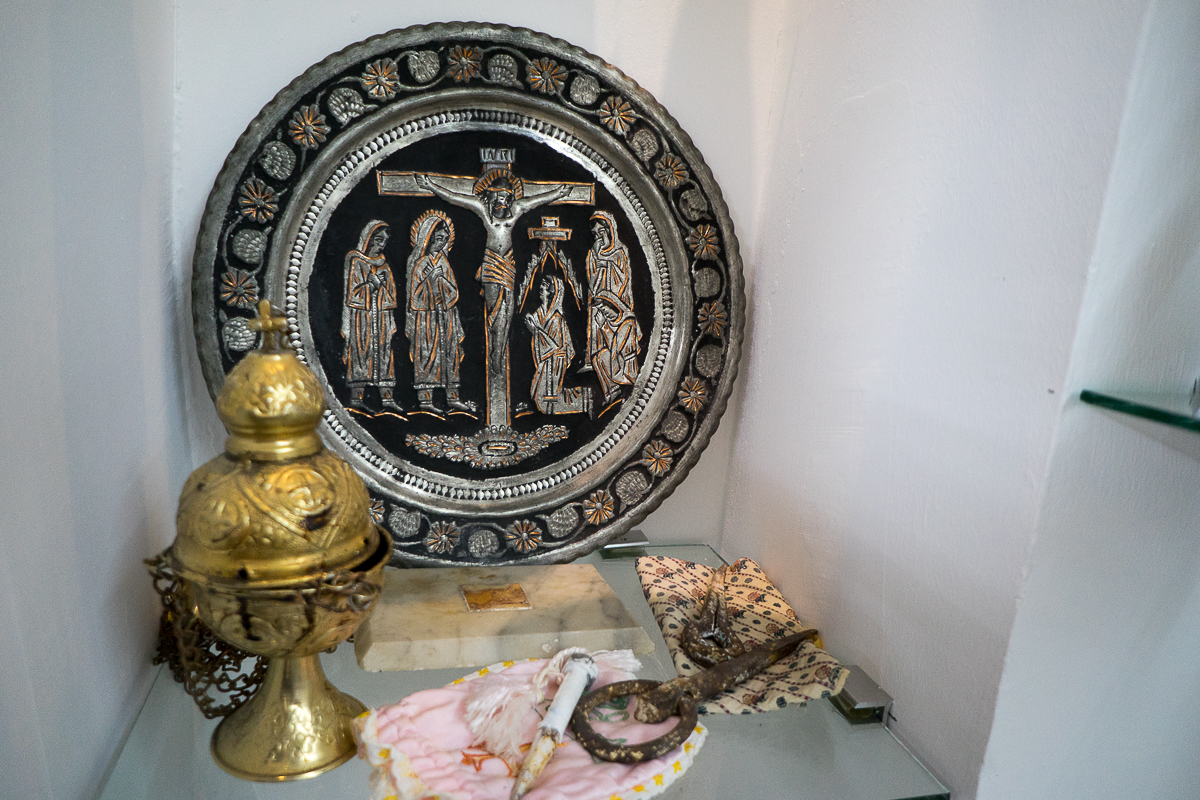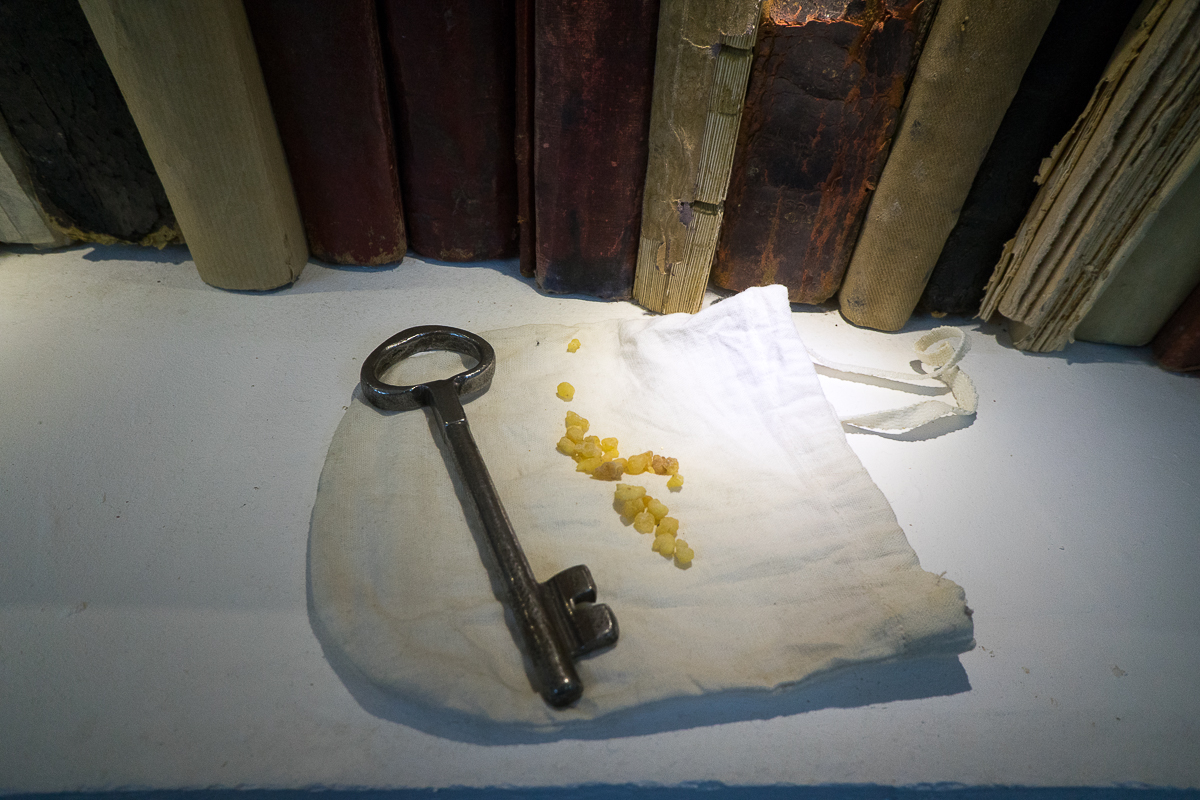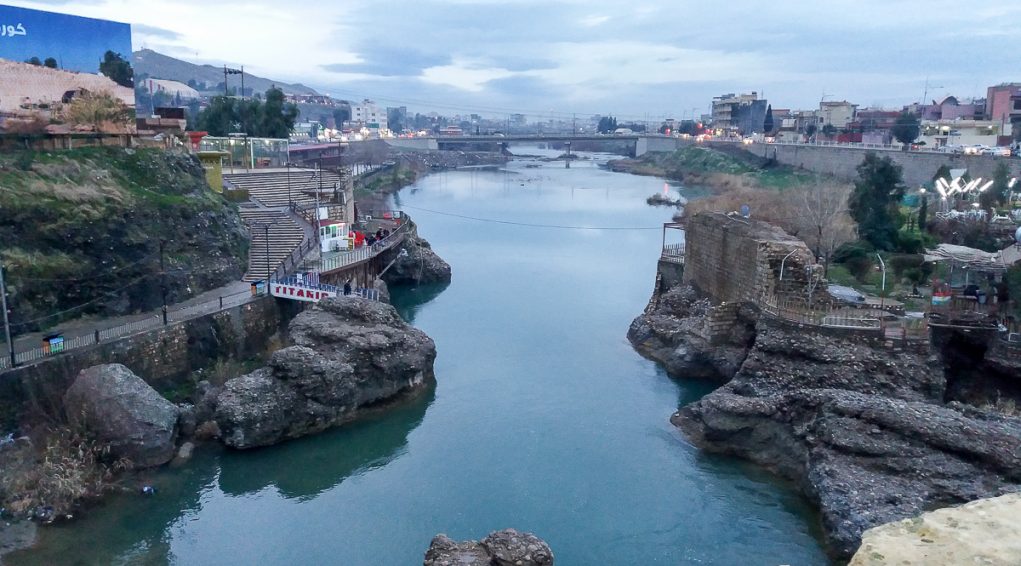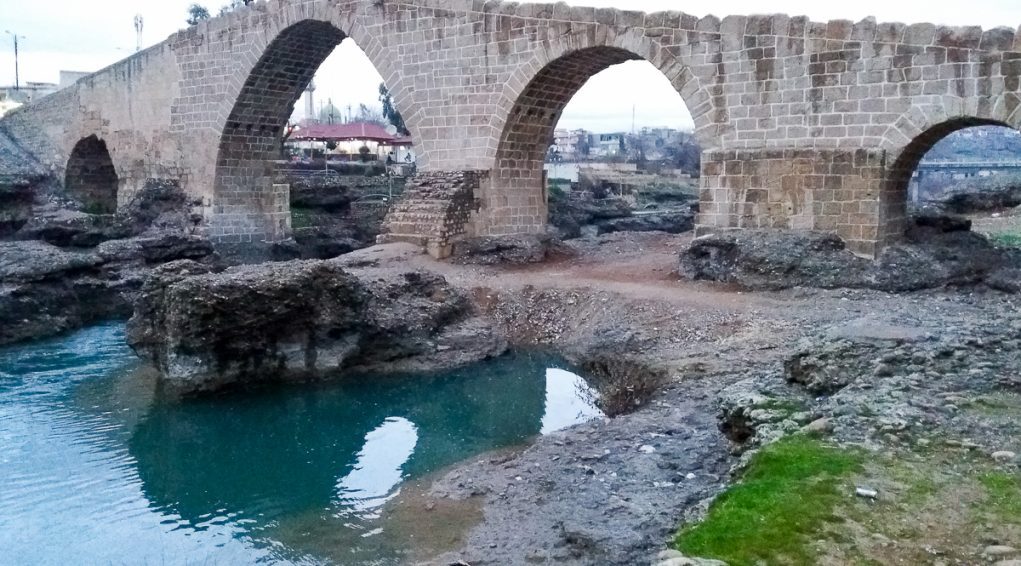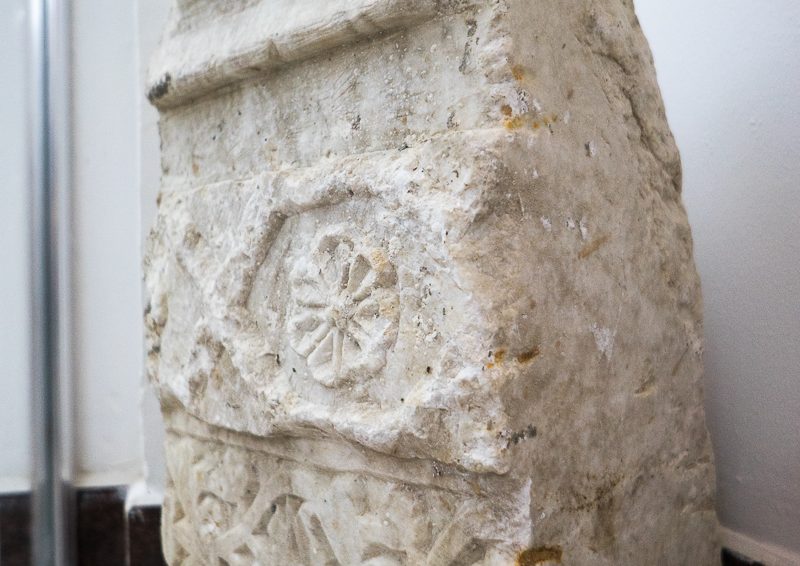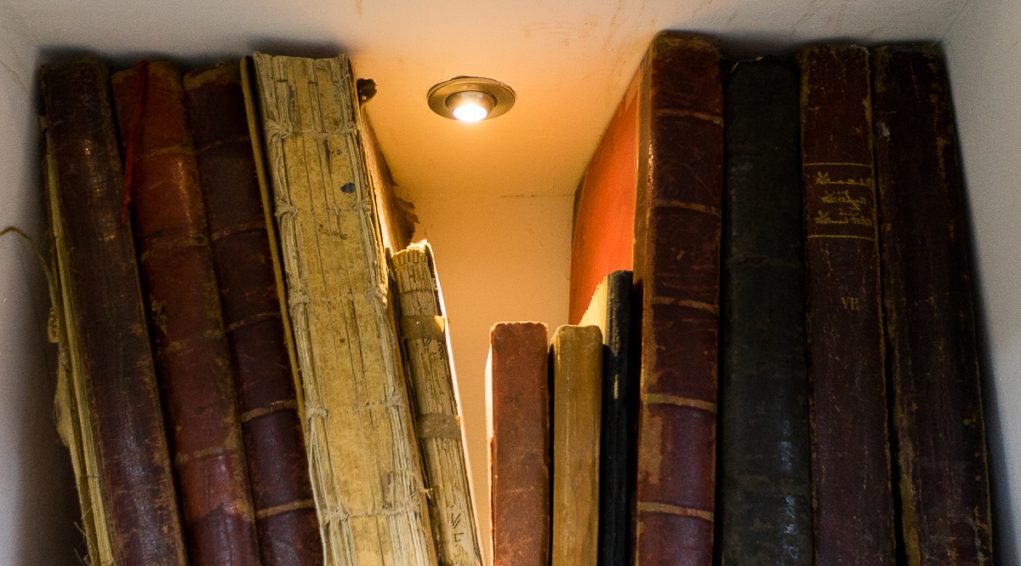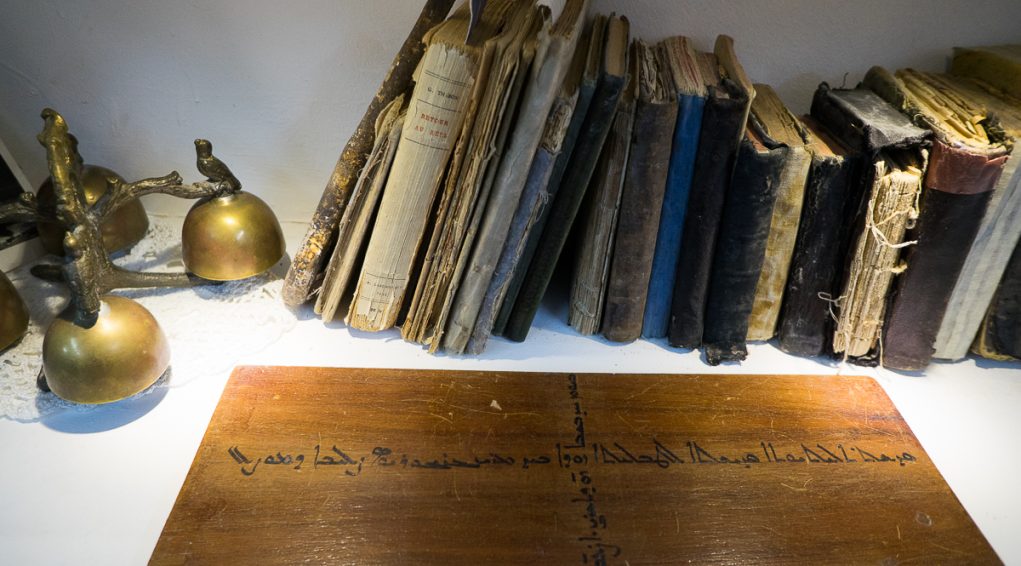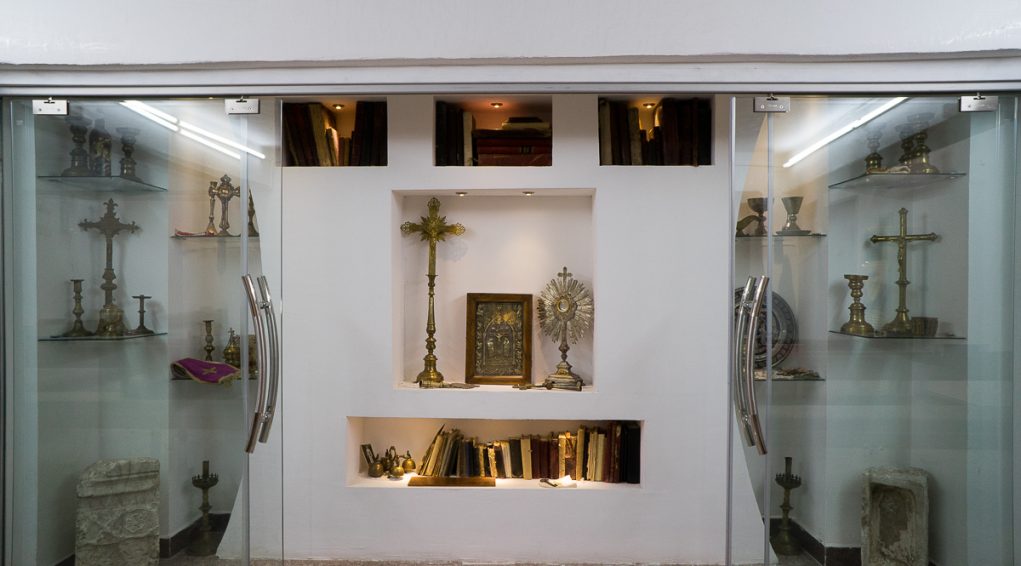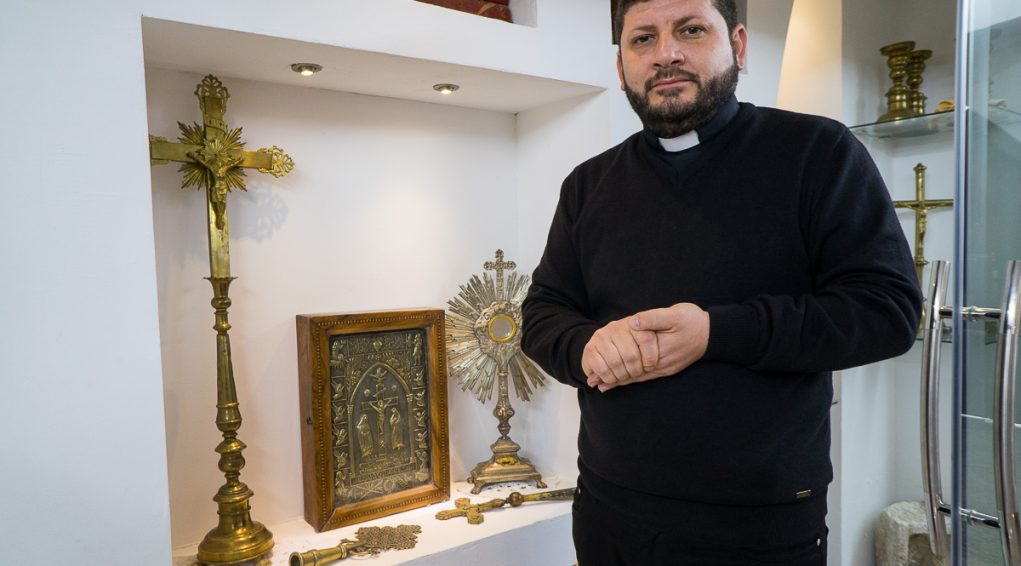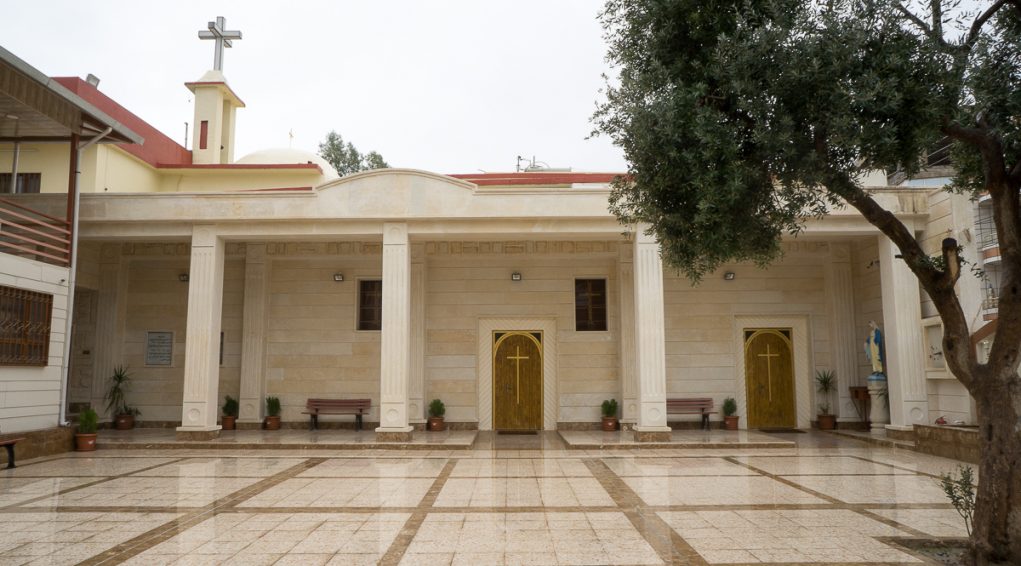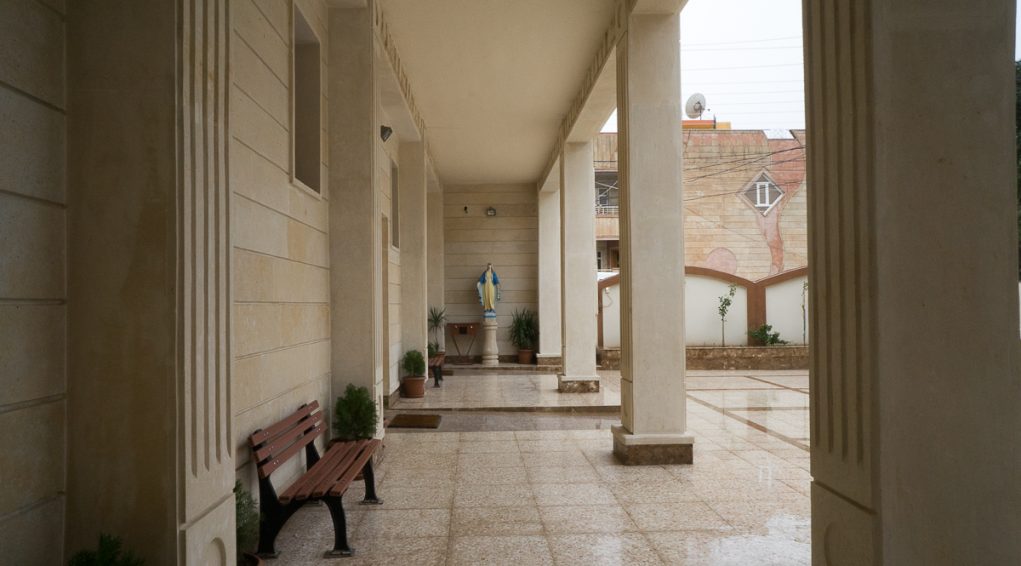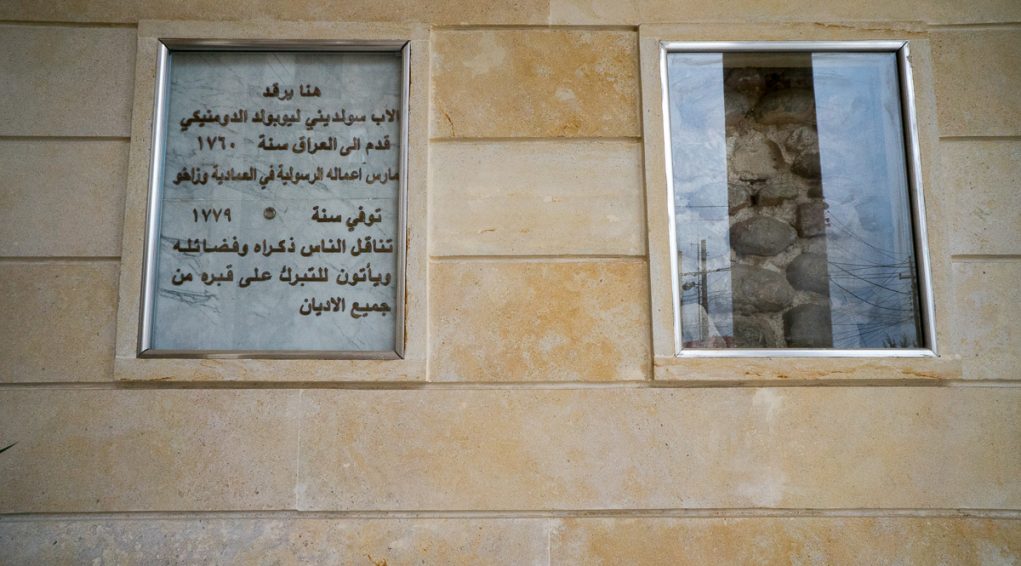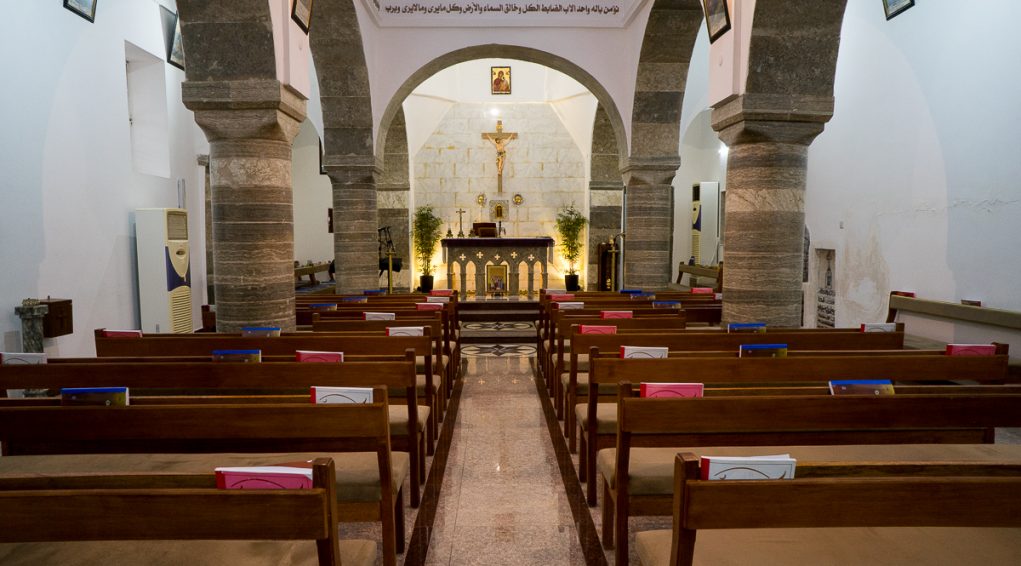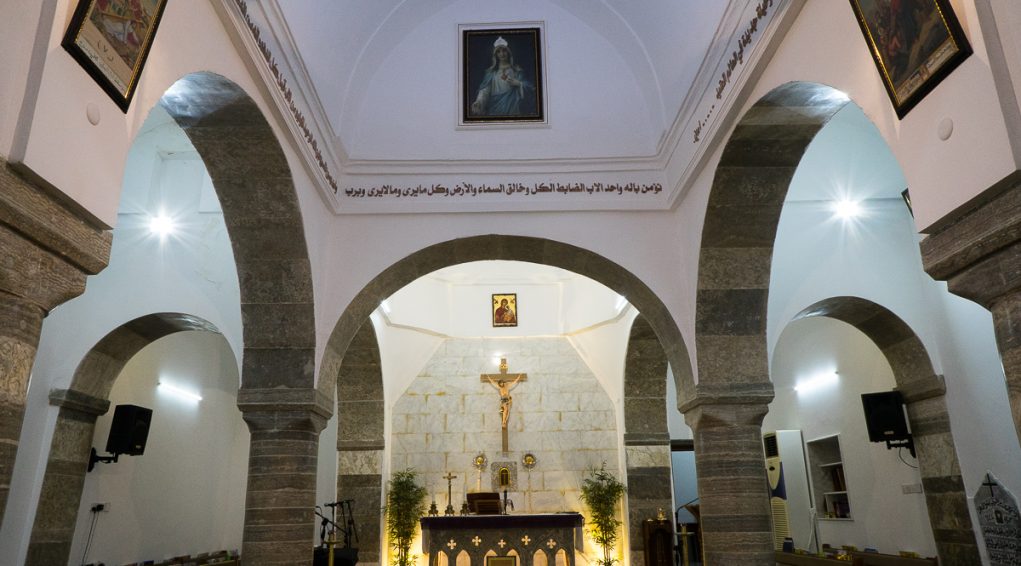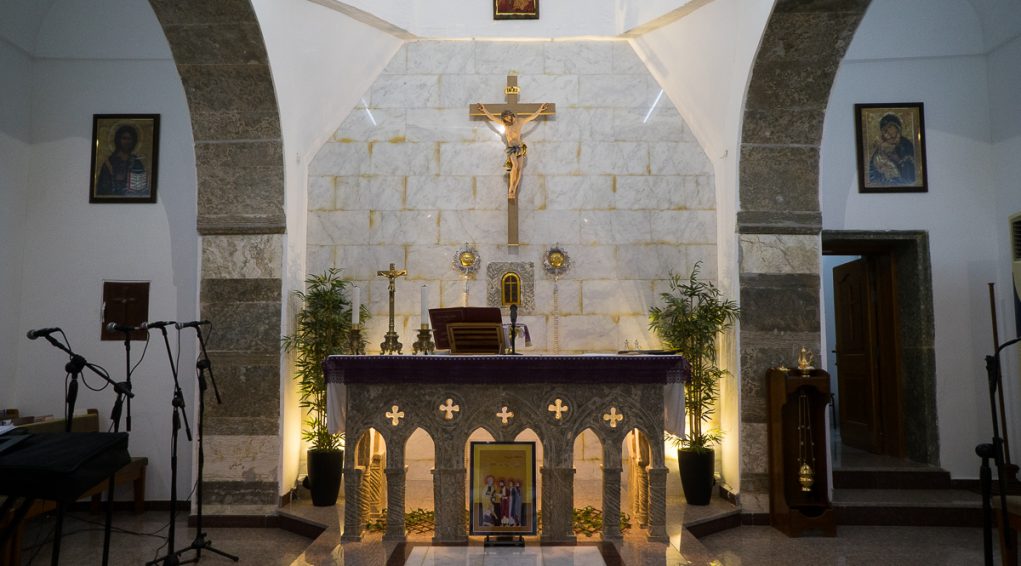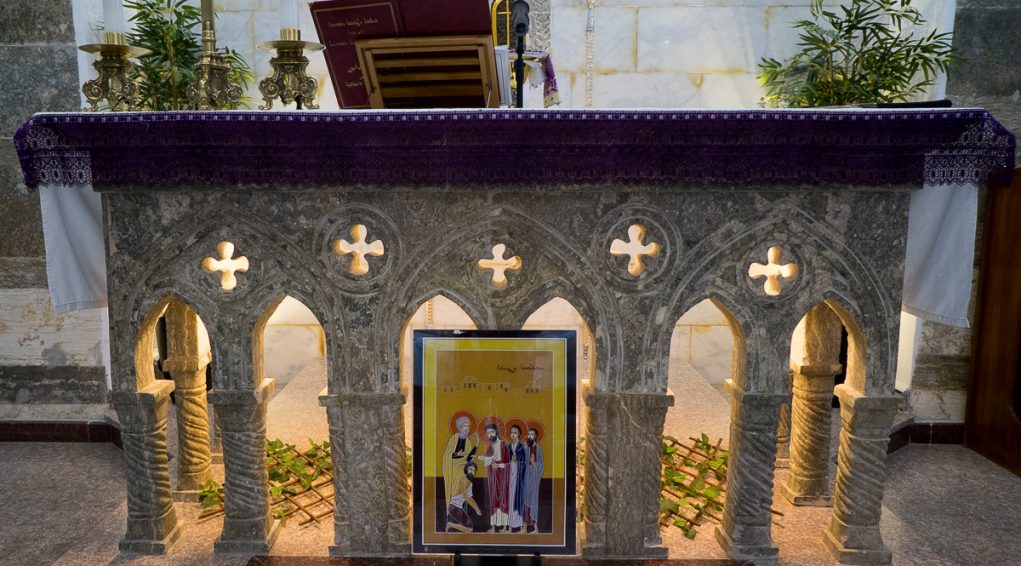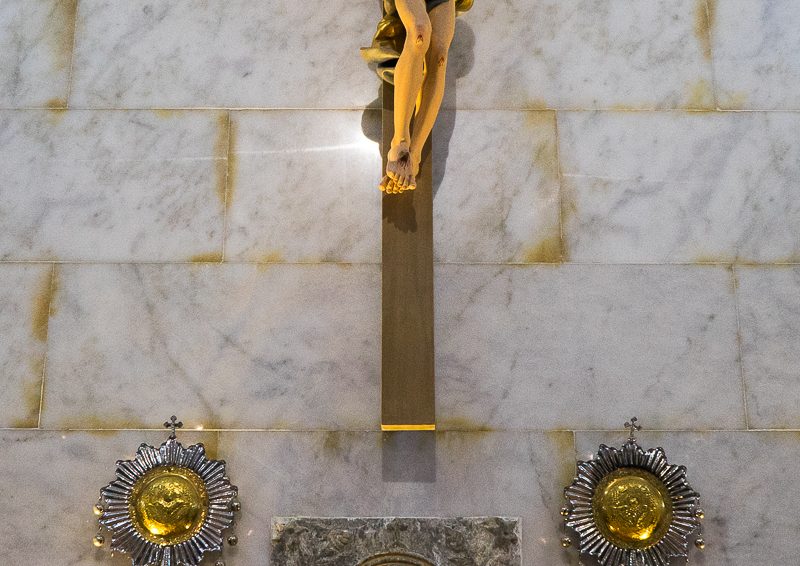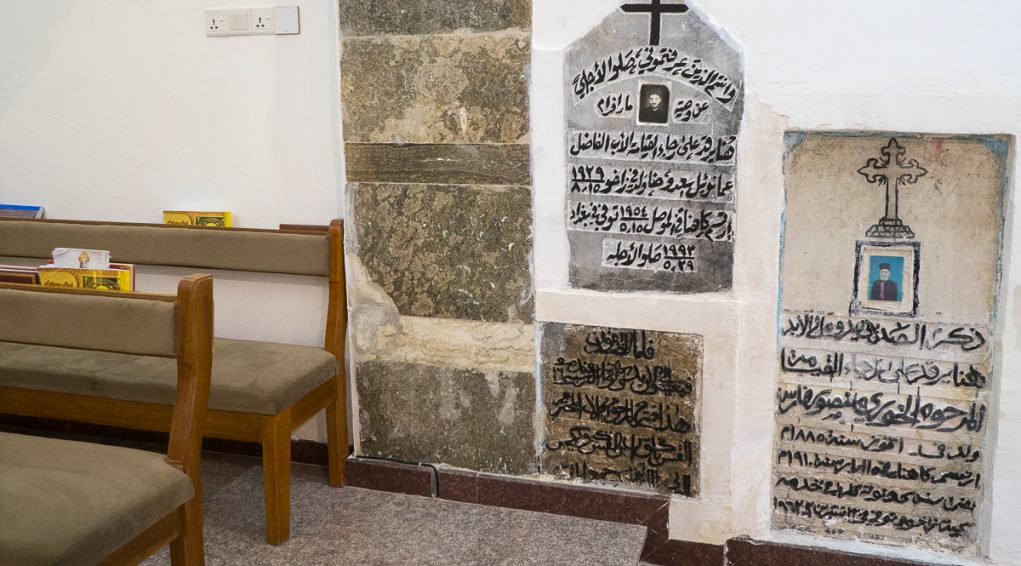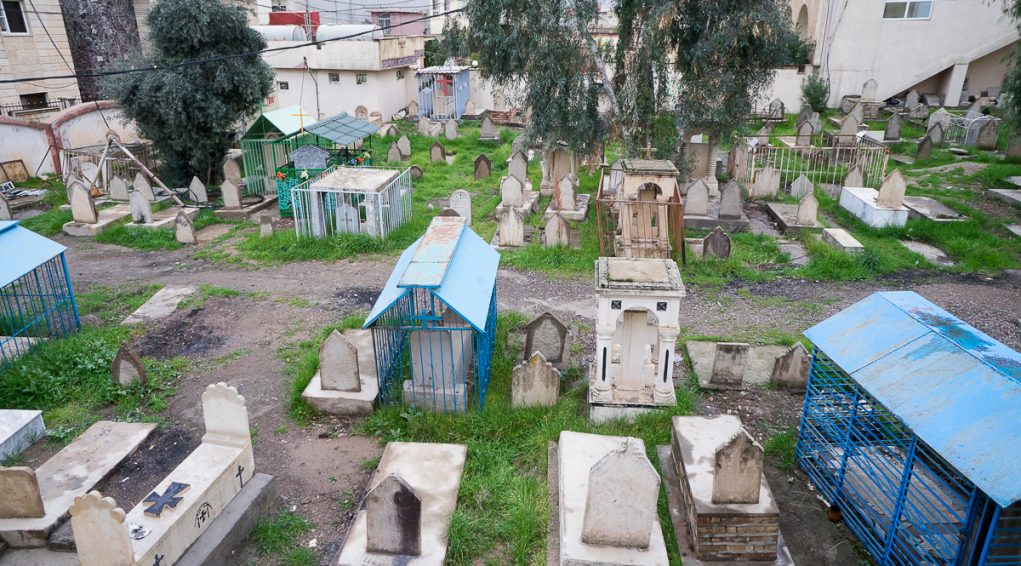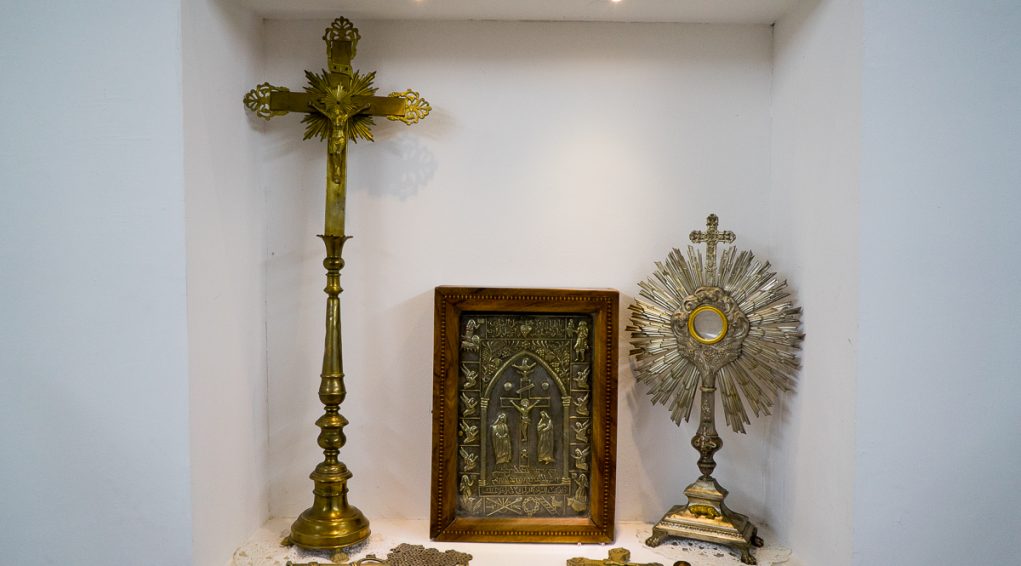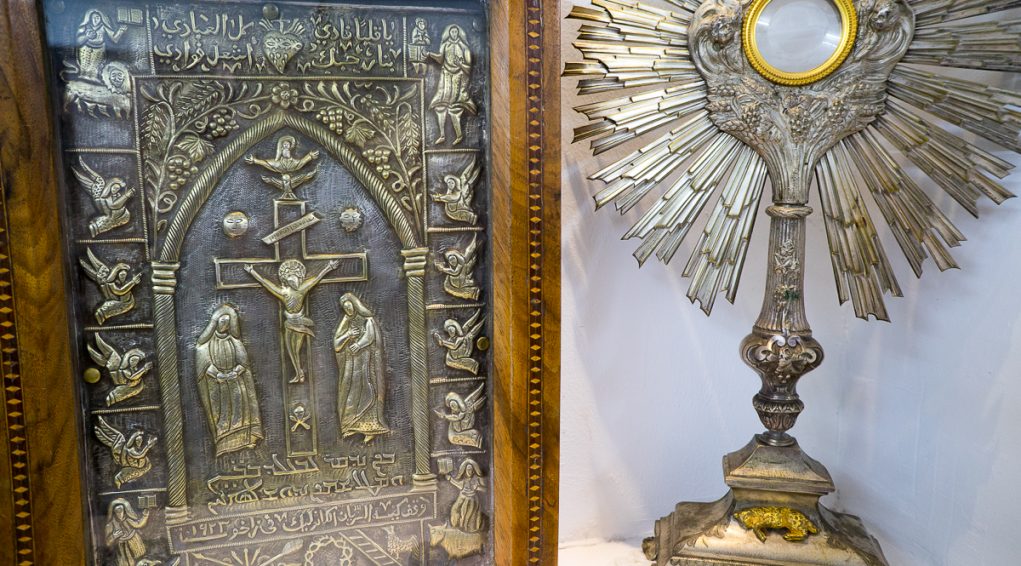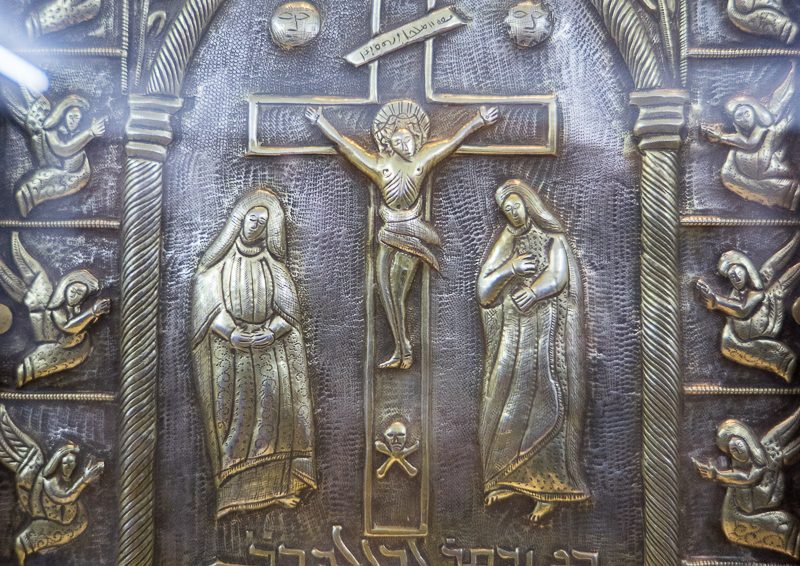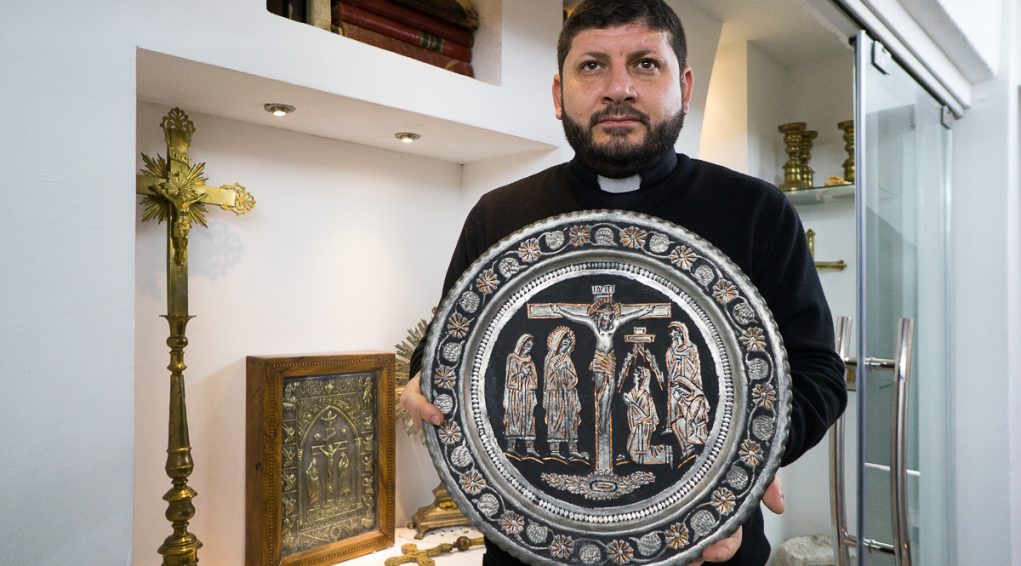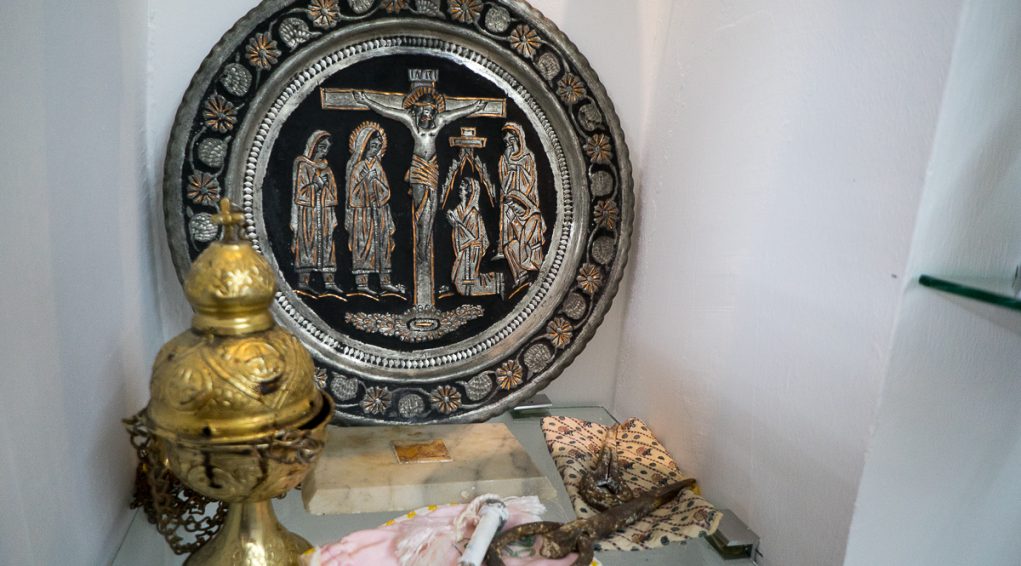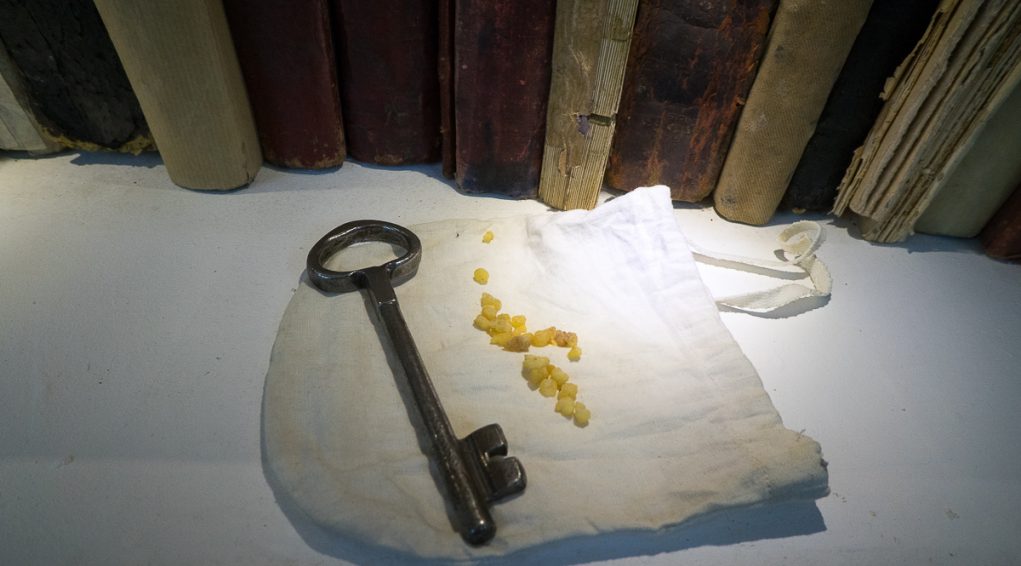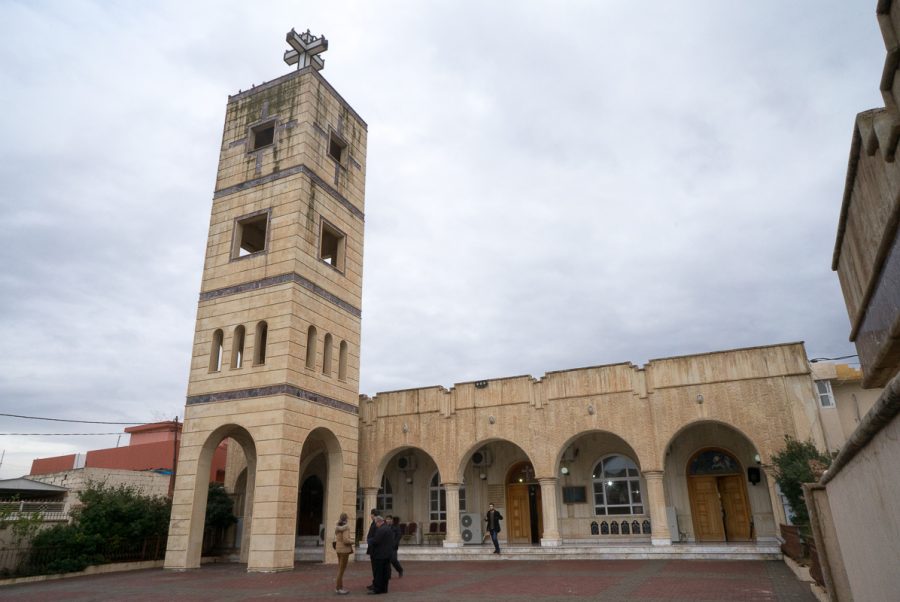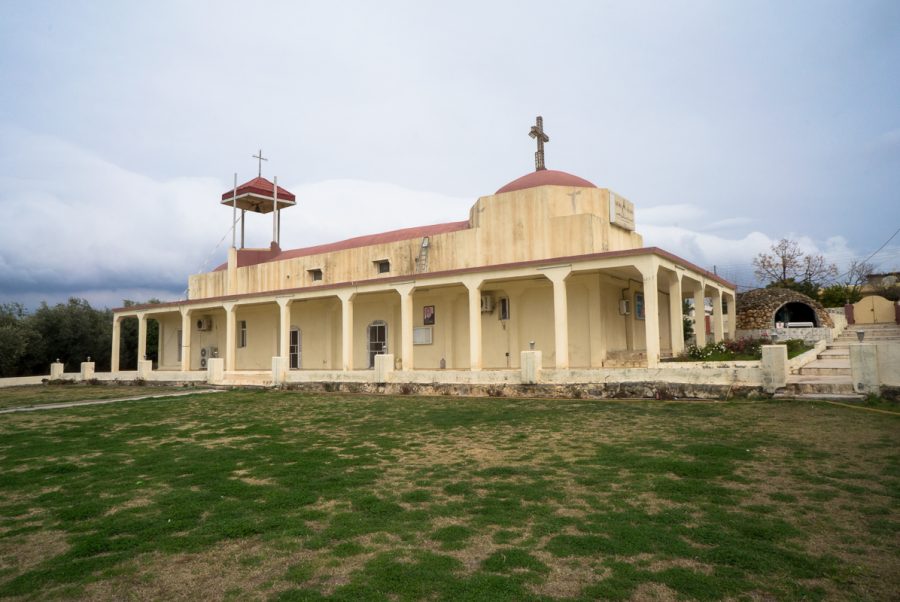The Mariam Al Adra (Virgin Mary) Church in Zakho
The Mariam al Adra church in Zakho is located at 37°08’28.4″N 42°40’36.2″E and 440 metres altitude, close to the Syrian and Turkish borders.
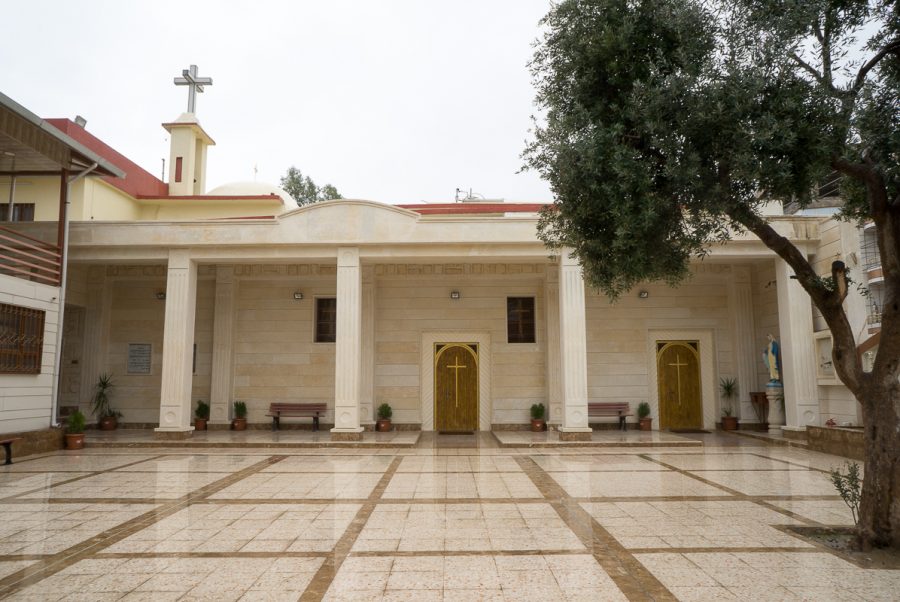
At the start of the 1960s, the population of Zakho was 45% Christian. Since, this figure has declined dramatically. In February 2018, it stood at no more than 1%. Most of the Syriac-Catholics living in Zakho came here from Baghdad and the Nineveh plain in 2005 and 2006 after the fall of Saddam Hussein’s regime.
Located in the Christian neighbourhood of Nassara, the Mariam al Adra church is attested to in 1850 in the Parish records.
The church is situated in a religious estate, which also contains a presbytery, a guest house and a cemetery. The whole estate is extremely well maintained. The church is particularly elegant inside. An admirable Parish museum has been set up under the tribune, to the west.
Pic: The Syriac-Catholic Mariam al Adra church in Zakho. February 2018 © Pascal Maguesyan / MESOPOTAMIA
Location
The Mariam al Adra (Virgin Mary) church in Zakho is located at 37°08’28.4″N 42°40’36.2″E and 440 metres altitude, close to the Syrian and Turkish borders.
Zakho is the largest Iraqi town on the Turkish and Syrian border. It is located just 6 kilometres east of the main Ibrahim Khalil border crossing into Turkey and 30 kilometres east of the Tigris on the far eastern border of Syria. Zakho therefore occupies a key strategic position.
Fragments of Christian history
The Christian history of Zakho is very similar to that of other villages of the area. Pre-existing Jewish presence and early evangelization under the influence of apostles Thomas, Addai (can also be the apostle Jude, also known as Thaddeus in the Gospel) and Mari. Throughout a 4th century full of vocations, the tradition relates many stories of martyrs persecuted by the Persian king Shapur II. Throughout this period, hermitages and primitive sanctuaries developed, at the very same place where Assyrian churches and monasteries progressively raised. Throughout the centuries and until the fall of the Ottoman Empire, the valleys and the mountains which edge this part of Mesopotamia were a place of fulfilment and protection for the Church of the East, on both sides of the modern Iraq-Turkey border where catholic missions flourished from the 17th century onwards with a surge in the 18th century. The Italian Dominican Léopold Soldini played a decisive role in bringing Catholicism to Kurdistan from 1760 until his death in Zakho in 1779 where his tomb became a pilgrimage site. This led to the faithful of the Church of the East (Nestorians) turning to the Chaldean church and the Syriac-Orthodox became Syriac-Catholics.
This community and denominational unity collapsed at the end of the 19th and start of the 20th century with the multiplication of raids committed by Kurdish tribes against Christian villages, the genocide of the Armenians, Assyrians, Chaldeans and Syriacs in the Ottoman empire from 1915 – 1918, and the subsequent break up of the empire.
During all the rest of the 20th century, and although the Iraqi administration took the lead from 1921, the Chaldeans had no respite. From 1961 to 1991, the repeated bombing and fighting between Kurdish separatists and the government in Bagdad led to constant population displacements, from the villages to the major towns and vice versa. This included the Christian communities and had a major impact on Christian heritage. Dozens of Christian villages on the Syrian, Turkish and Iranian borders were bombed and razed to the ground. “The most ancient churches, some over ten centuries old, were destroyed.[1]” There are no traces of Zakho’s ancient churches. Those visible today are all relatively recent, regardless of their denomination. In the governorate of Dohuk-Nohadra, where Zakho is situated, “if we say that if one hundred churches were blown up (the real figure is of course much higher) this would mean at least two hundred inscriptions would be lost.[2]” ISIS may not have reached Iraqi Kurdistan, but “the outcomes of the Saddam era were terrible for the Christian community in Kurdistan.[3]” In the second half of the 1990s, after the Gulf war and the progressive emergence of an autonomous Kurdistan, the Christians of Kurdistan returned to their home villages. This phenomenon intensified from 2003 onwards, with the fall of Saddam Hussein and the new wave of anti-Christian persecution by criminal, Islamicist groups.
_______
[1]In Croissance, 1995, Chris Kutschera. https://www.chris-kutschera.com/chretiens_irak.htm. It should be noted that the Beidar (Bidar) church was renovated and is again used for services.
[2]In « Recueil des inscriptions syriaques », tome 2, Amir Harrak, Académie des inscriptions et belles lettres, 2010, p.533
[3]In « Le livre noir de Saddam Hussein », Chris Kutschera, Oh Éditions, 2005, p.398
Christian demographics in Zakho
Zakho is an ancient city known since the time of ancient Greece. Its name, which means victoryin Syriac, refers to a battle against Persia from which the Roman Empire emerged victorious.
At the start of the 19th century, the Dominican Father Giuseppe Campanile counted “ten thousand souls” in Zakho, including “six thousand Jews, three thousand Turks, and one thousand Christians, both Catholic and Jacobite, not to mention the numerous foreigners present in the city for trading purposes.[1]”The Jewish presence was vital but declined to nothing at the start of the 1950s.
At the start of the 1960s, before the start of the war between the Iraqi government and the Kurdish peshmerga “the population of the city of Zakho was made up of 45% of Christians.[2]”This figure has declined dramatically. In Februay 2018, Christians made up only 1% of the population of Zarkho, i.e. 3,500 people out of a total population of 350,000 inhabitants, mainly concentrated in the Nassara neighbourhood. This breaks down as: 64 Syriac-Catholic families, 360 Chaldean families and 200 Armenian Apostolic families.[3]
Most of the Syriac-Catholics living in Zakho came here from Baghdad and the Nineveh plain in 2005 and 2006 after the fall of Saddam Hussein’s regime. However, the families originally from Zakho almost all left Iraq in the 1990s due to the economic collapse and the appeal of the Syriac communities across the world.
_______
[1]In « Storia della regione del Kurdistan », 1818. Translated from French by the Dominican Father Thomas Bois in 1953, published in the review Études kurdesby the Institut kurde de Paris, Special Edition I, April 2004, p.31.
[2]In « Le livre noir de Saddam Hussein », Chris Kutschera, Oh Éditions, 2005, p.394
[3]Evaluation by Mesopotamia. Based on a data collection campaign in February 2018 carried out with the priests of the Chaldean (Father Johny Daoud Hanna archpriest of the Mar Gorgis cathedral and episcopal vicar of the diocese of Zakho) and Syriac-Catholic communities (Father Youssef Djemil Chito, archpriest of the Mariam al Adra church in Zakho).
History of the Mariam al Adra church in Zakho
Located in the Christian neighbourhood of Nassara, the Mariam al Adra church is attested to in 1850 “thanks to the register of baptisms and weddings.[1]”A written source refers to the presence of a sanctuary in 1612[2]on the site where the church now stands. The church is also attested to in 1923, thanks to the Gospels found there.
Originally Syriac-Orthodox, the Mariam al Adra church became Syriac-Catholic in light of the spread of Catholicism in Kurdistan.
The Mariam al Adra church was renovated in 1966. It was at this time that the gallery at the entrance to the building was built. The church was then closed in 1993 due to the emigration of the Syriac-Catholics of Zakho. Abandoned for 12 years, it was reopened in 2005, thanks to the arrival of Syriac-Catholics from the Nineveh plain and Baghdad. One year later, in 2006, it underwent a further renovation. The latest work dates from 2015 when a small museum was created inside the building itself under the tribune to the west of the building.
Since 2006, four priests have followed on from each other at the Mariam al Adra church. The current incumbent is Abouna Youssef Djemil Chito. Born in Baghdad to a family originally from Qaraqosh (Bakhdida), he became archpriest of the Mariam al Adra church in 2012. It is Father Youssef Djemil Chito who is responsible for promoting the church’s architectural heritage and the creation of the museum.
_______
[1]Father Youssef Djemil Chito, Syriac-Catholic archpriest of the Mariam al Adra church in Zakho.
[2]Father Youssef Djemil Chito, Syriac-Catholic archpriest of the Mariam al Adra church in Zakho, claims this source is in the possesssion of the archeological department of the Iraqi government in Baghdad.
Description of the Mariam al Adra church in Zakho
The church is situated in a religious estate which also contains a presbytery, a guest house and a cemetery. The whole estate is extremely well maintained and equipped with modern, functional facilities.
Seen from the exterior, the basic bell tower stands on a terrace roof, next to a hemispherical dome, which dominates the choir. The esplanade is covered in stone slabs. The two entrance doors to the church are located under the gallery. On the north facade of the building, an engraved headstone is embedded in the wall, in memory of the 18th century priest and Dominican missionary Léopold Soldini, still held in high regard in Zakho.
The church is particularly elegant inside. Its triple-nave structure is mounted with barrel vaults and pointed arches. The building is supported by three pairs of thick freestanding pillars in Mosul marble, and load-bearing pillars in the north and south facades, connected with semi-circular arches.
The floor is covered in marble slabs. The walls have been meticulously coated in white rendering.
There is no royal door or choir screen separating the nave from the sanctuary, this is marked by a simple step. In the choir, the charming, marble high altar with colonnades is beautifully lit. Previously backing onto the east wall, it has been moved forward to preside facing the congregation. Above the sanctuary is a cupola with an octagonal base, perforated with windows.
On the southern wall are the funeral headstones of three priests who served the Mariam al Adra church in Zakho.
The museum
An admirable Parish museum has been set up under the tribune, to the west of the building. The different liturgical objects and books on display include a wooden crate with glazing, a Gospel copied in 1923 with a silver, hammer finished cover showing the crucifixion. The original Gospel was produced in Azeur, a village to the west of Mardin (Turkey).
There is also a beautiful, large hammer finished and painted plate gifted to Father Youssef Djemil Chito by a family from Mardin (Turkey). It also depicts Christ on the cross with the holy women at the foot of Golgotha. There are only three of these plates: in Mardin (Turkey), Hassake (Syria) and Zakho.
The museum also contains an ancient key to the Mariam al Adra church, in the typical style of ancient keys in the north of Iraq.
Monument's gallery
Monuments
Nearby
Help us preserve the monuments' memory
Family pictures, videos, records, share your documents to make the site live!
I contribute